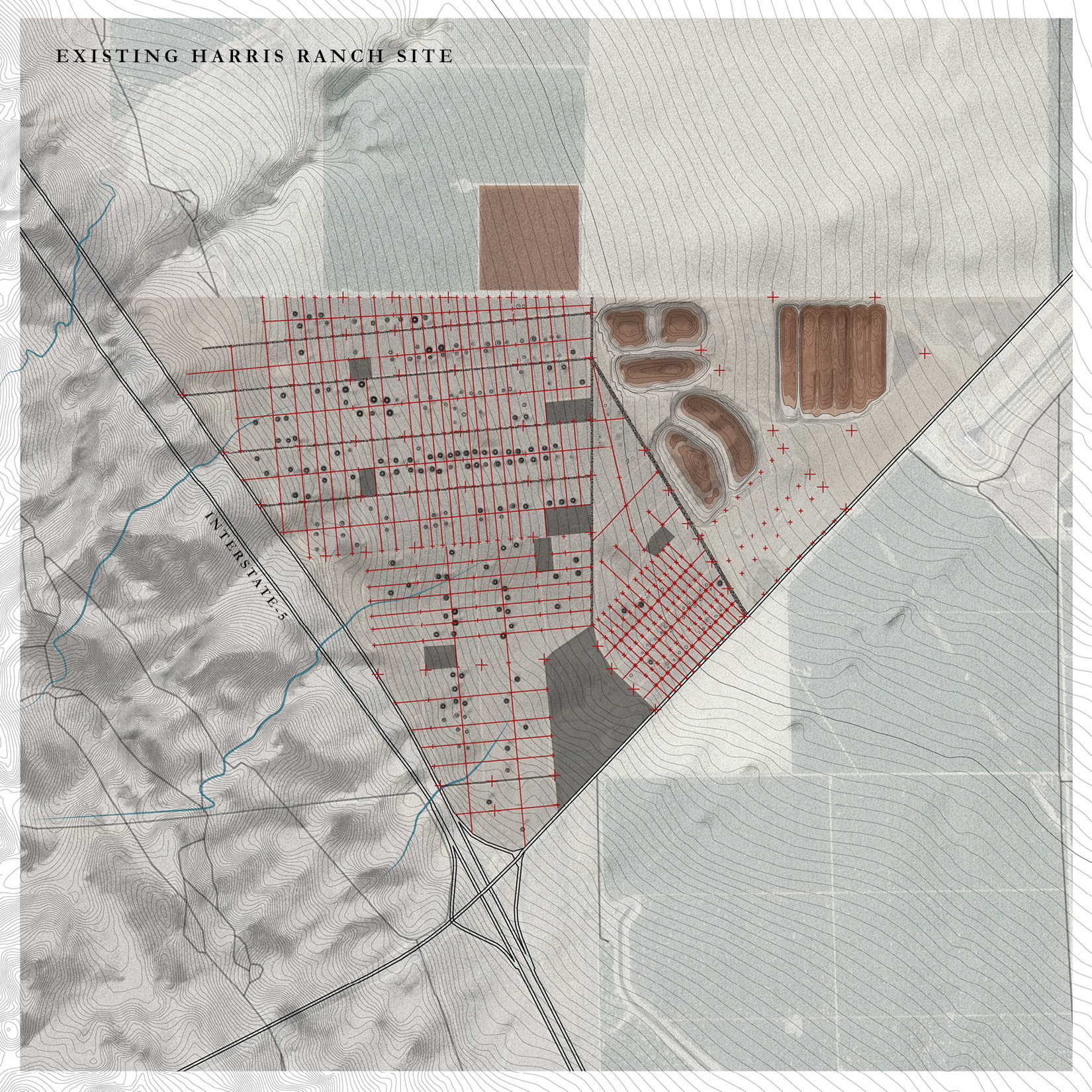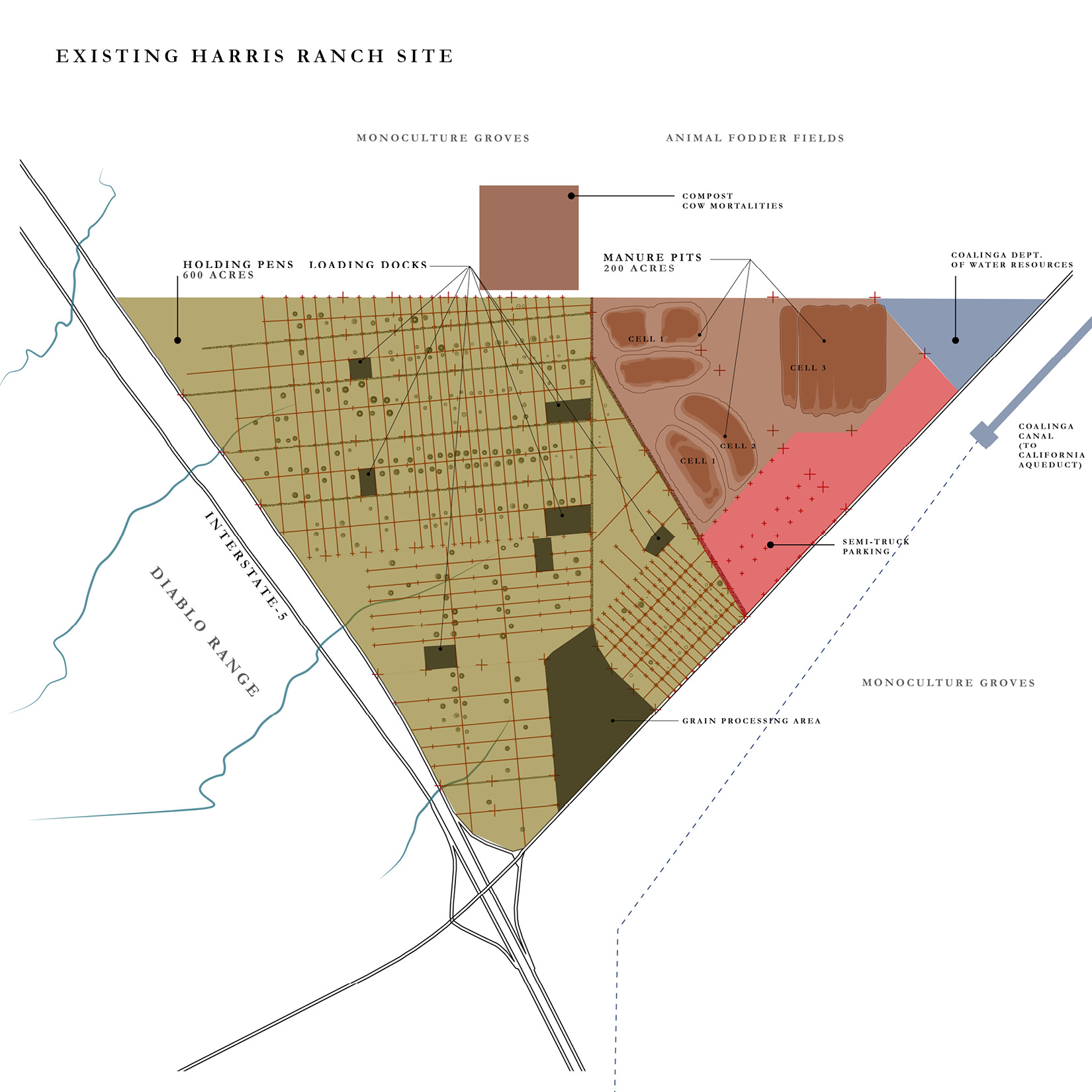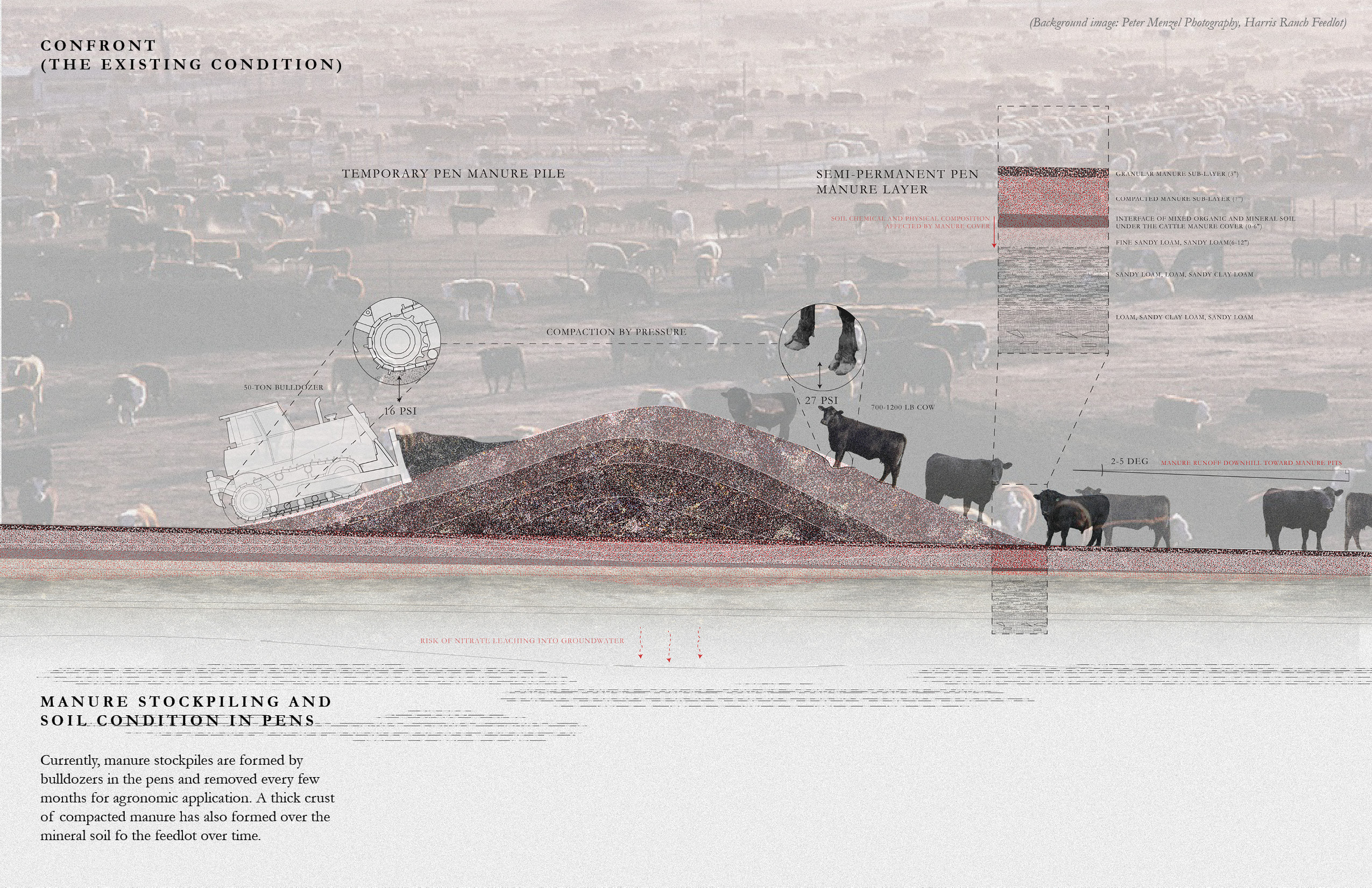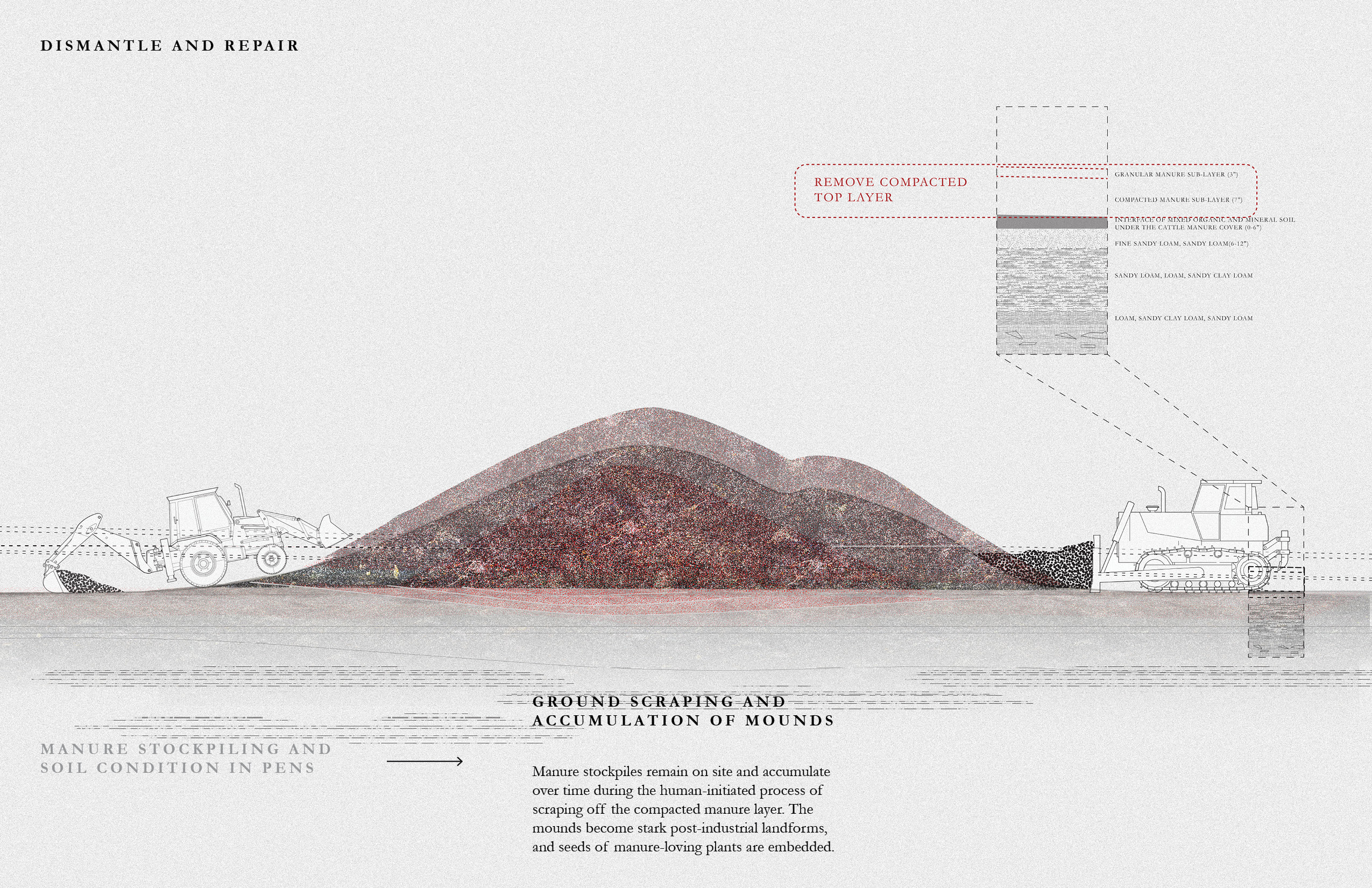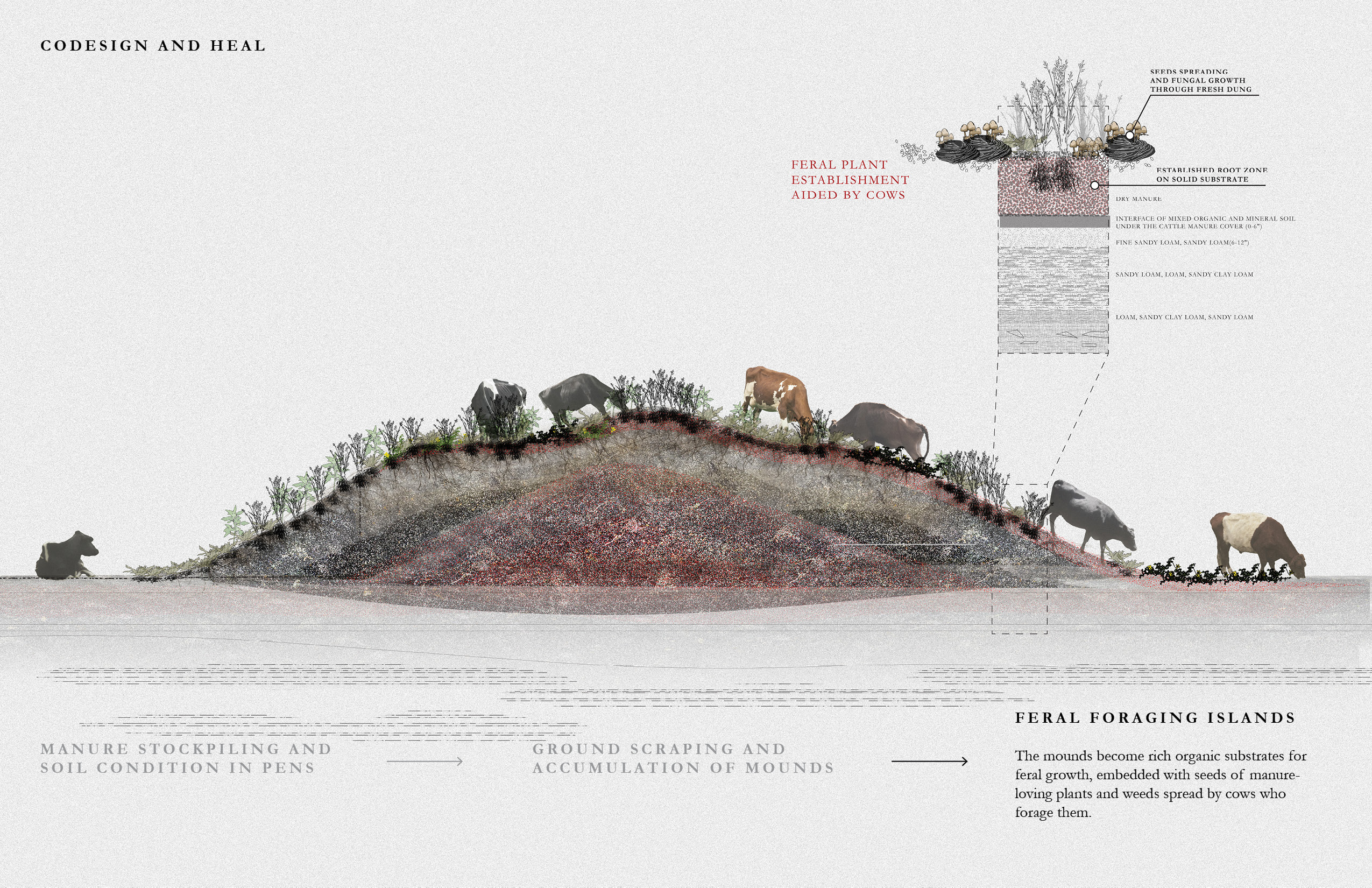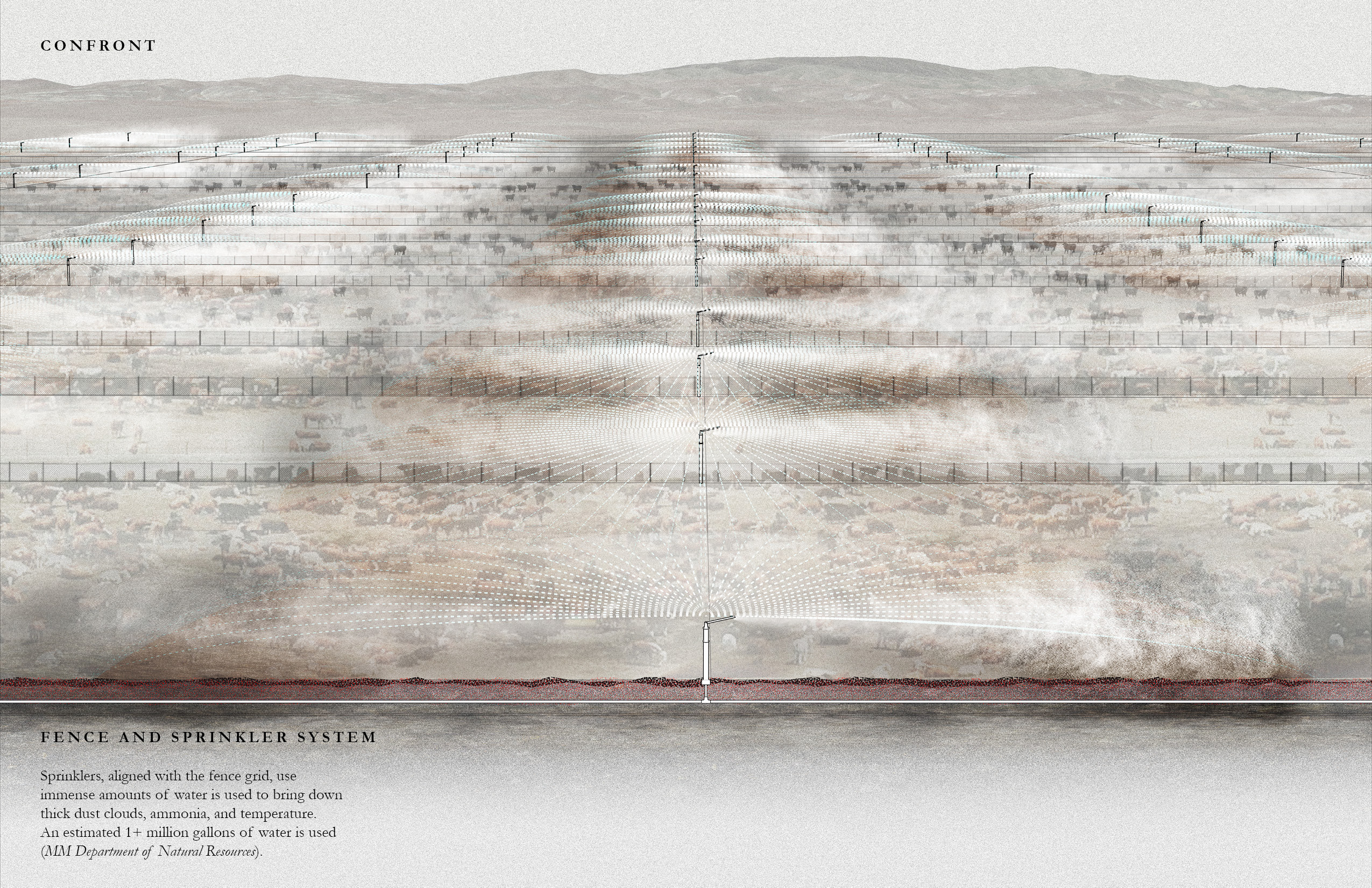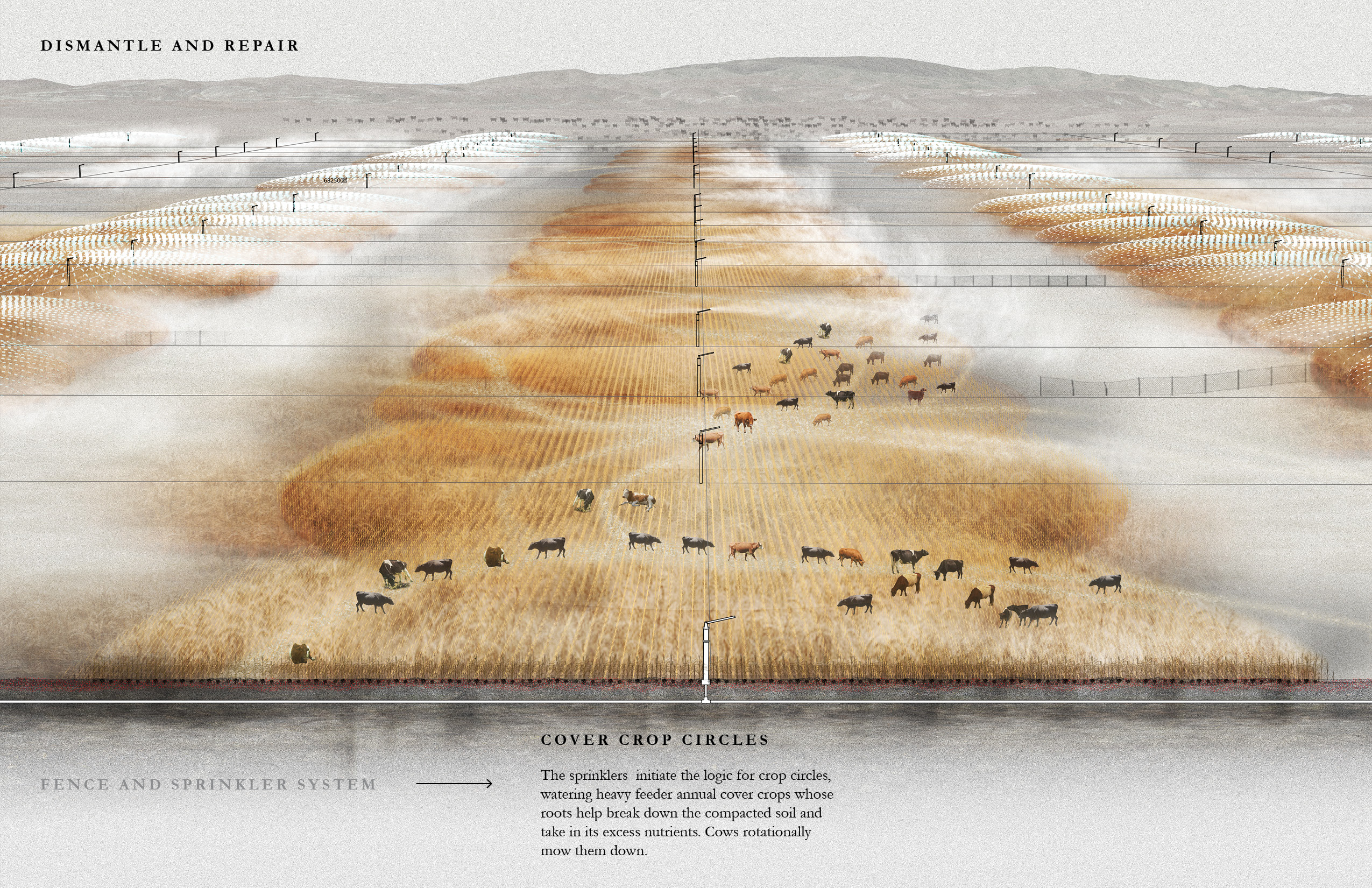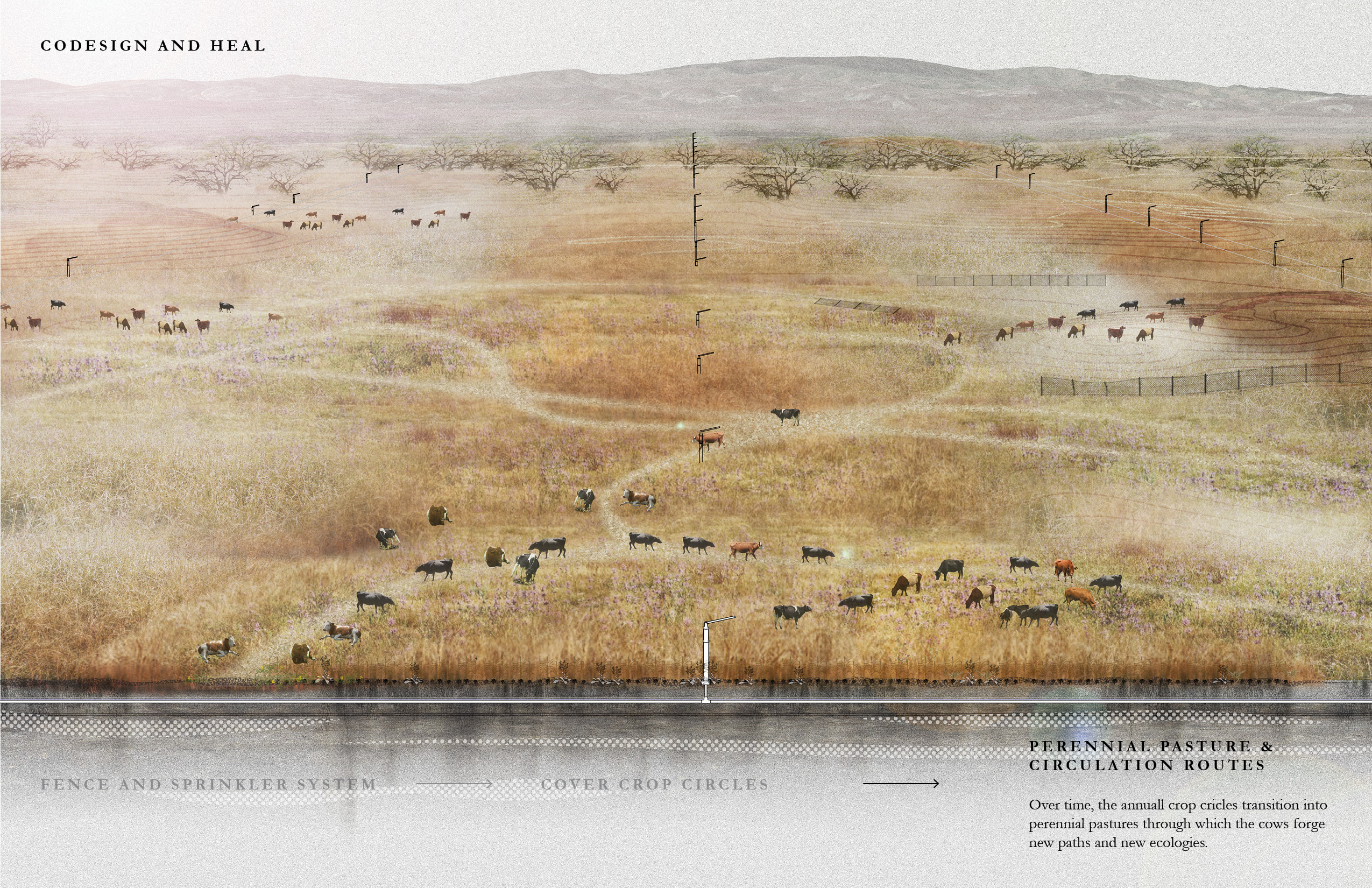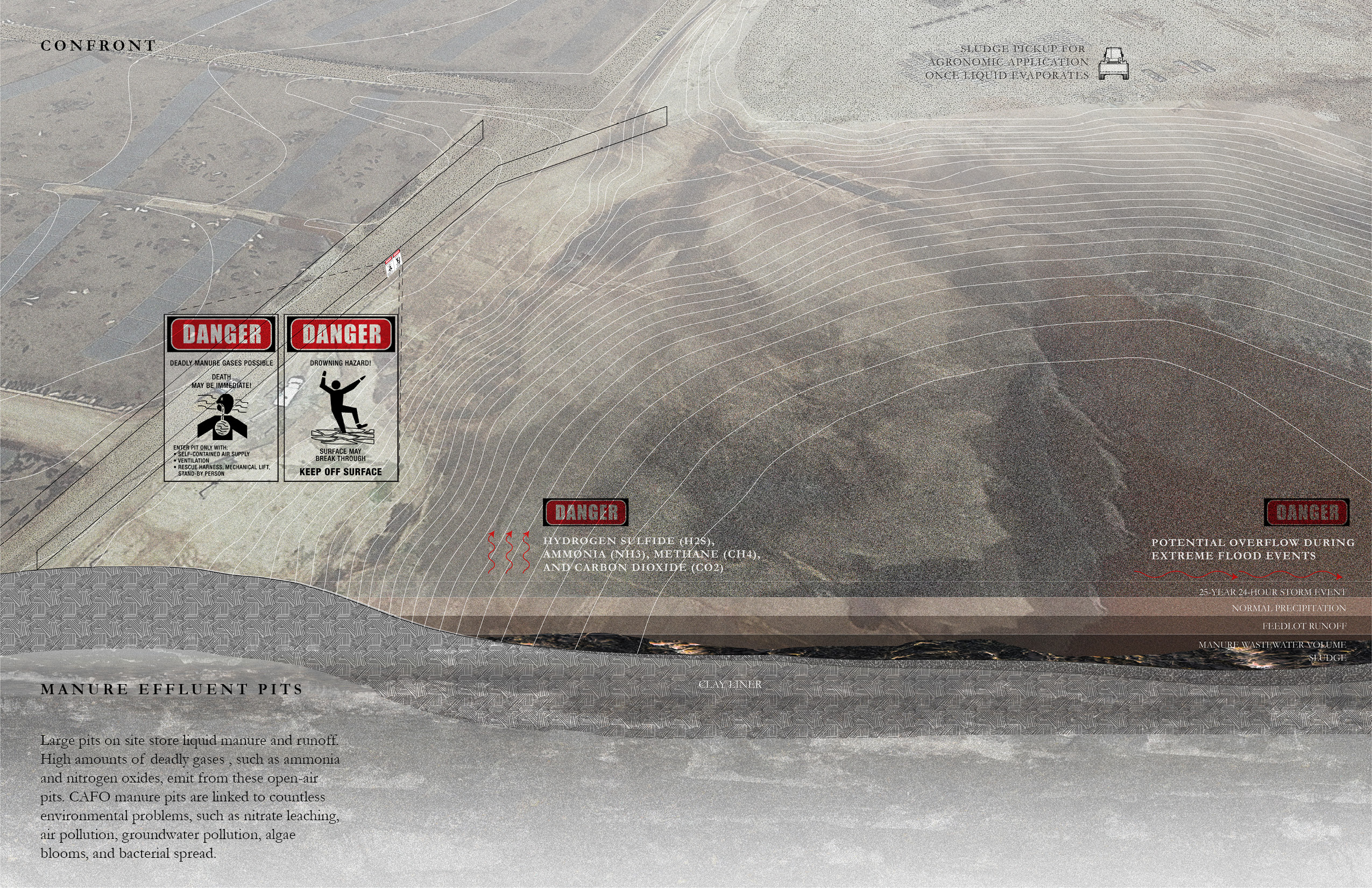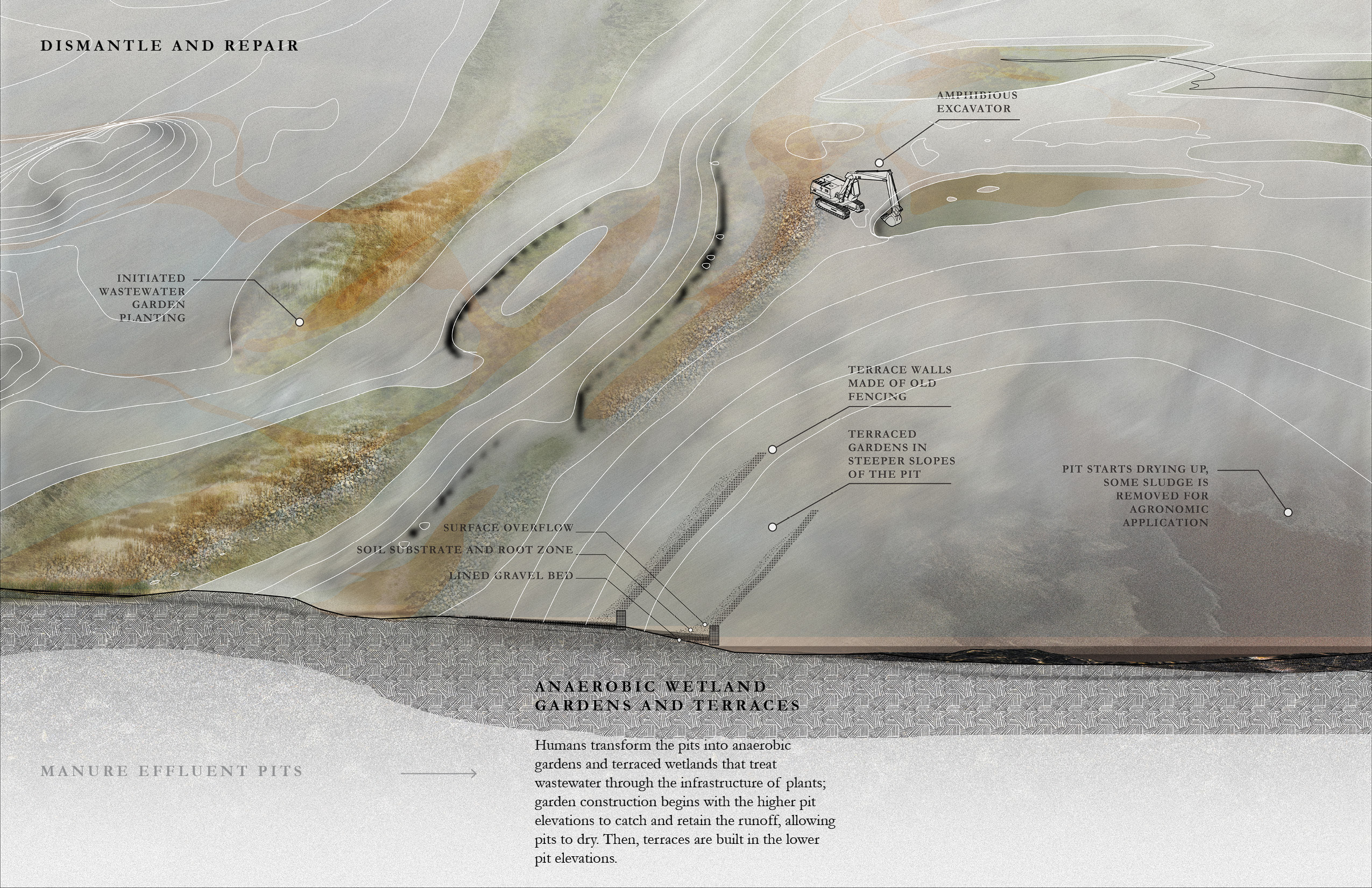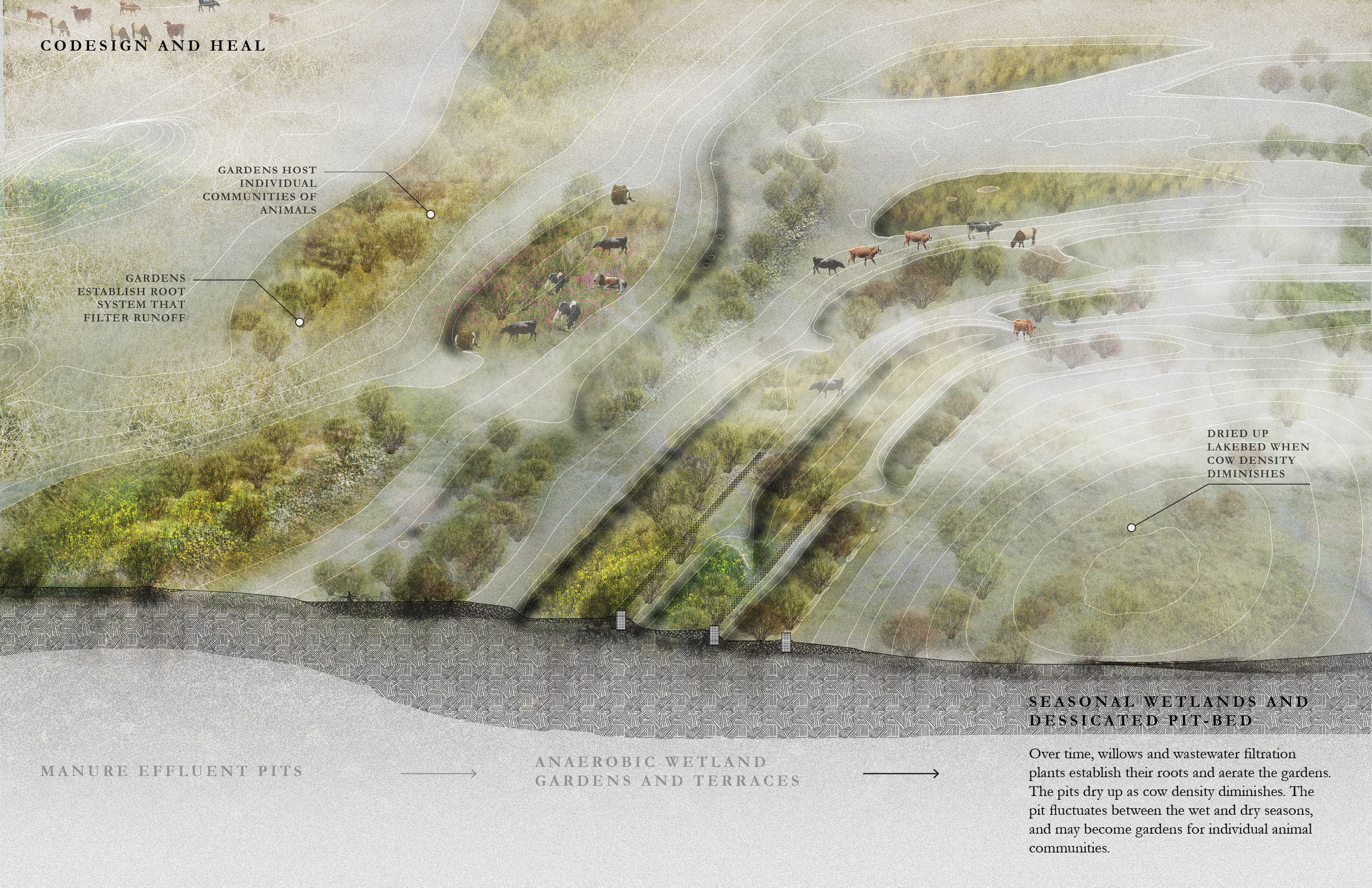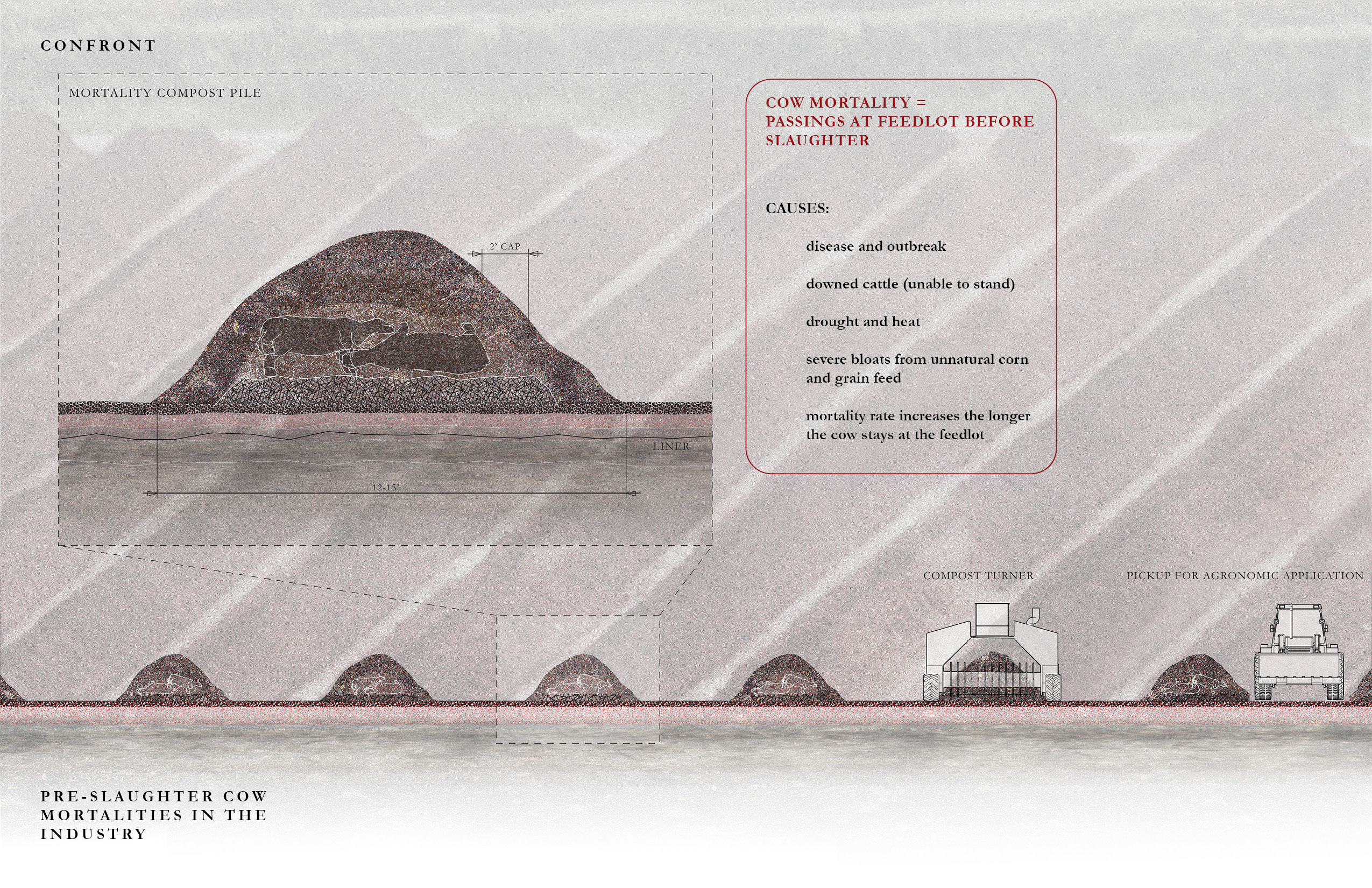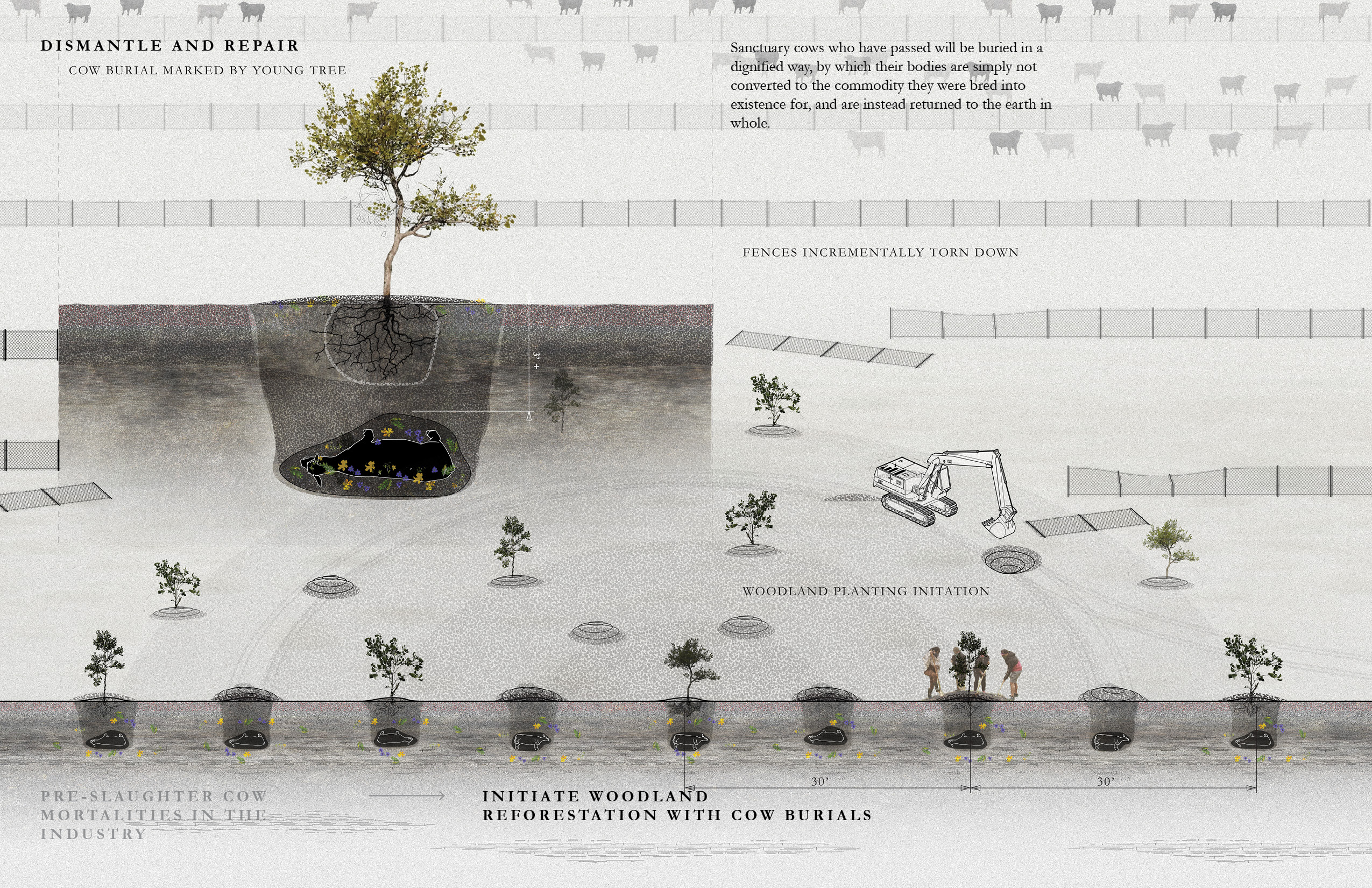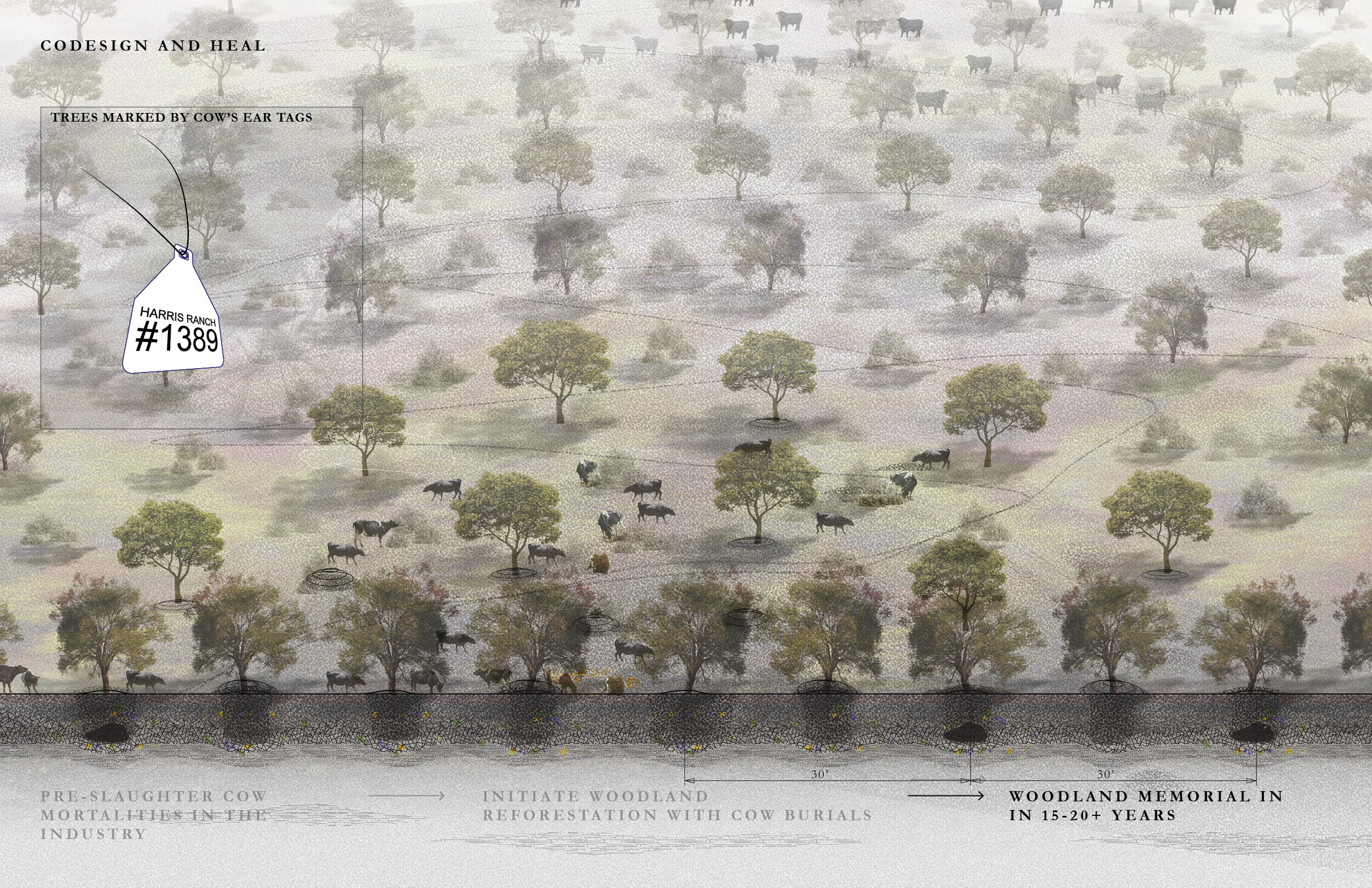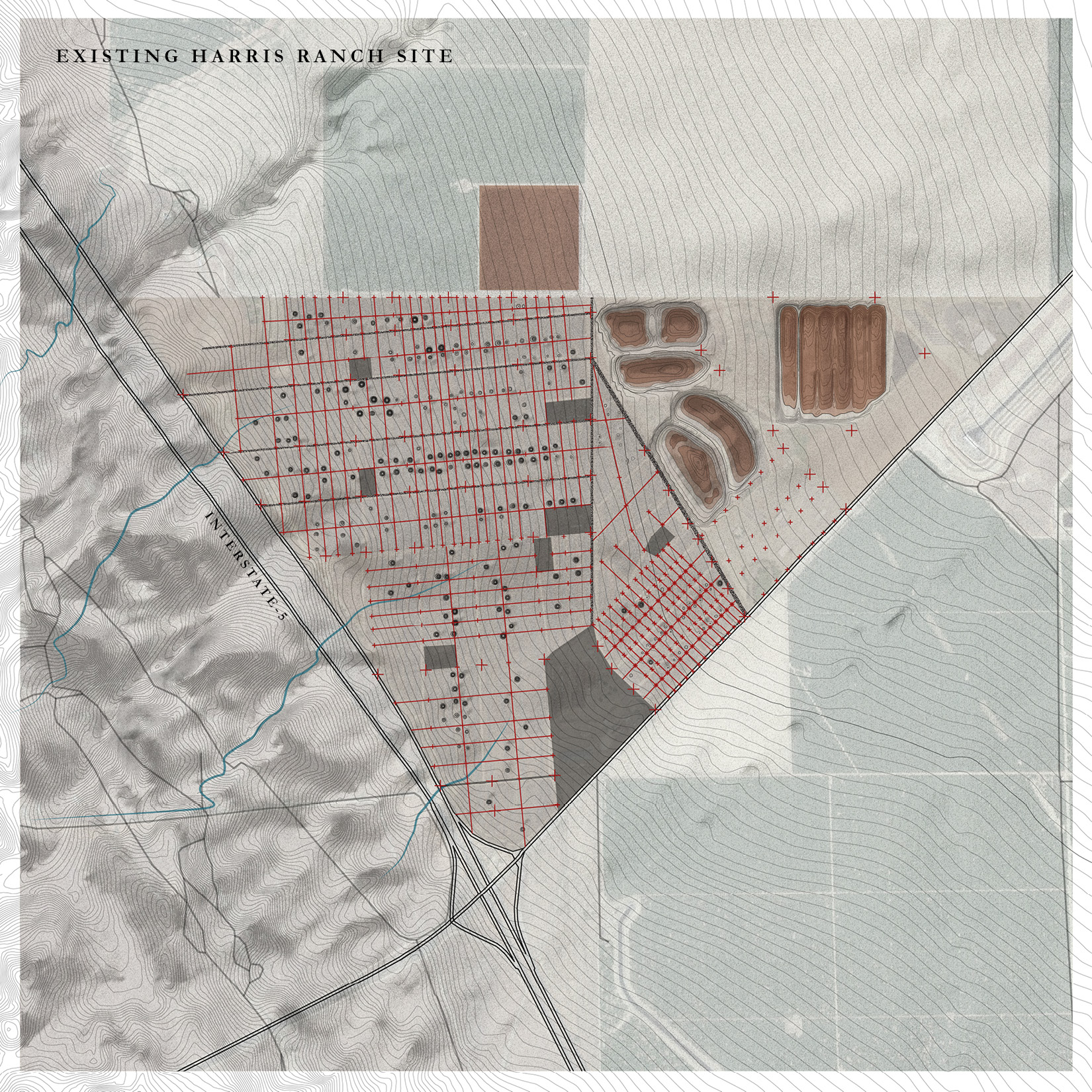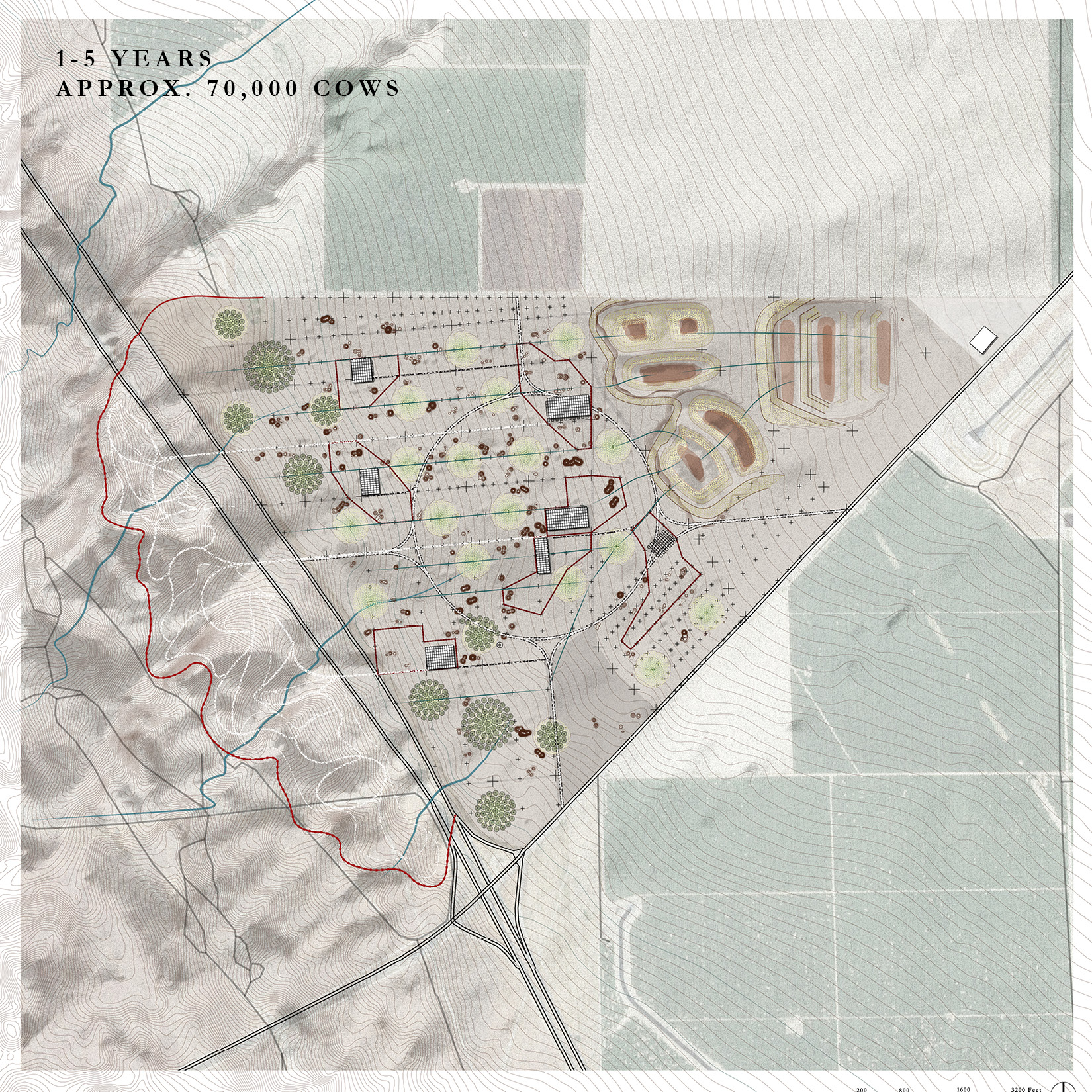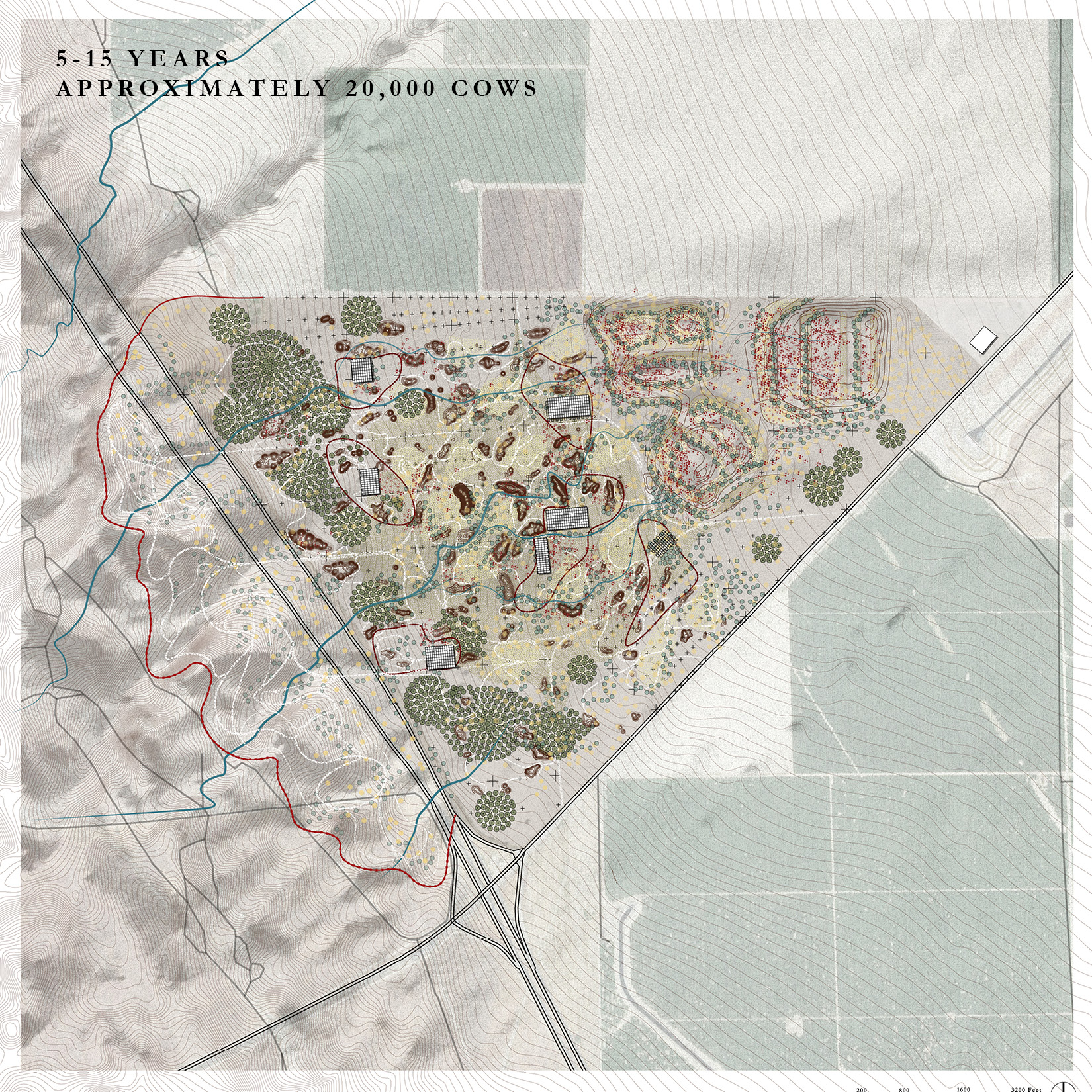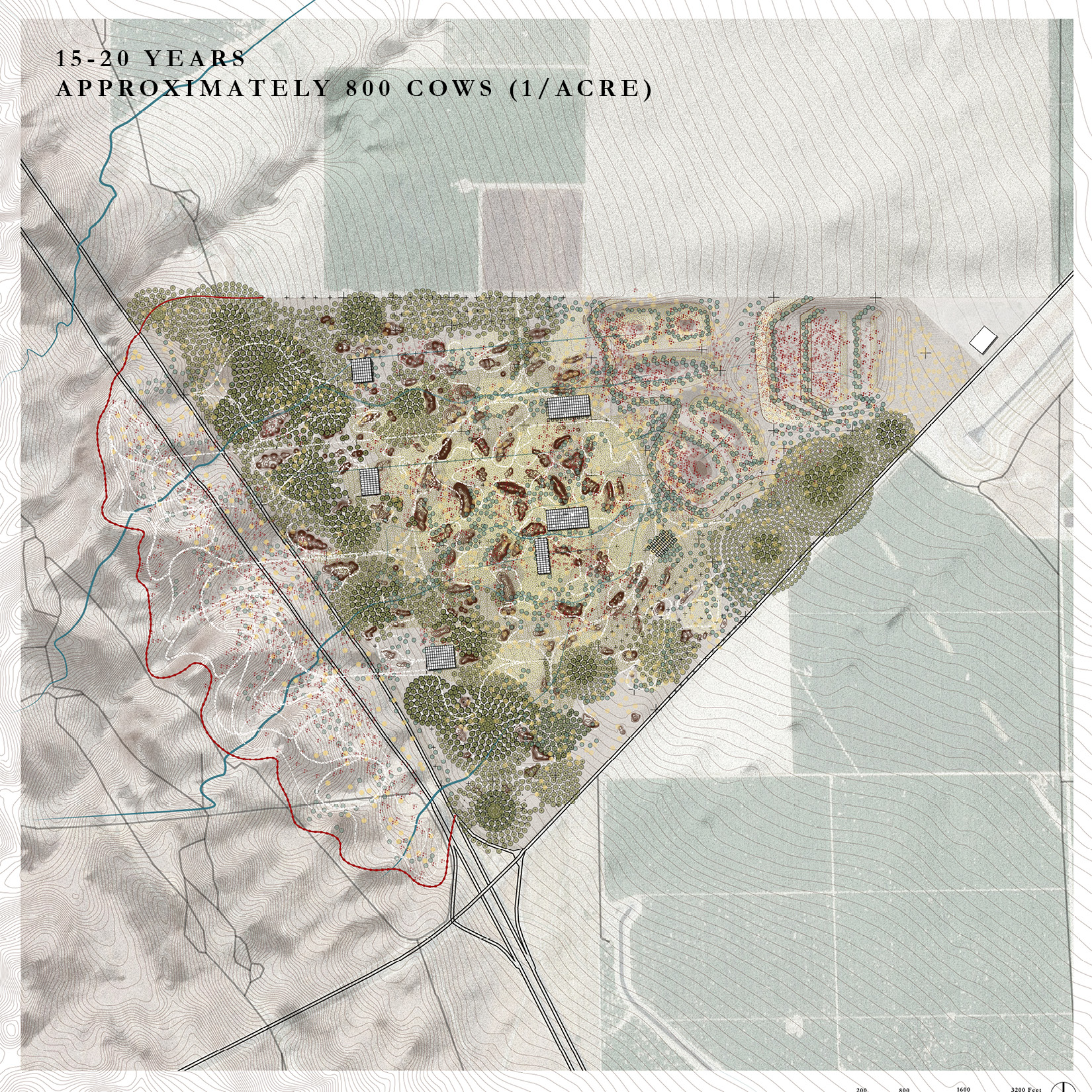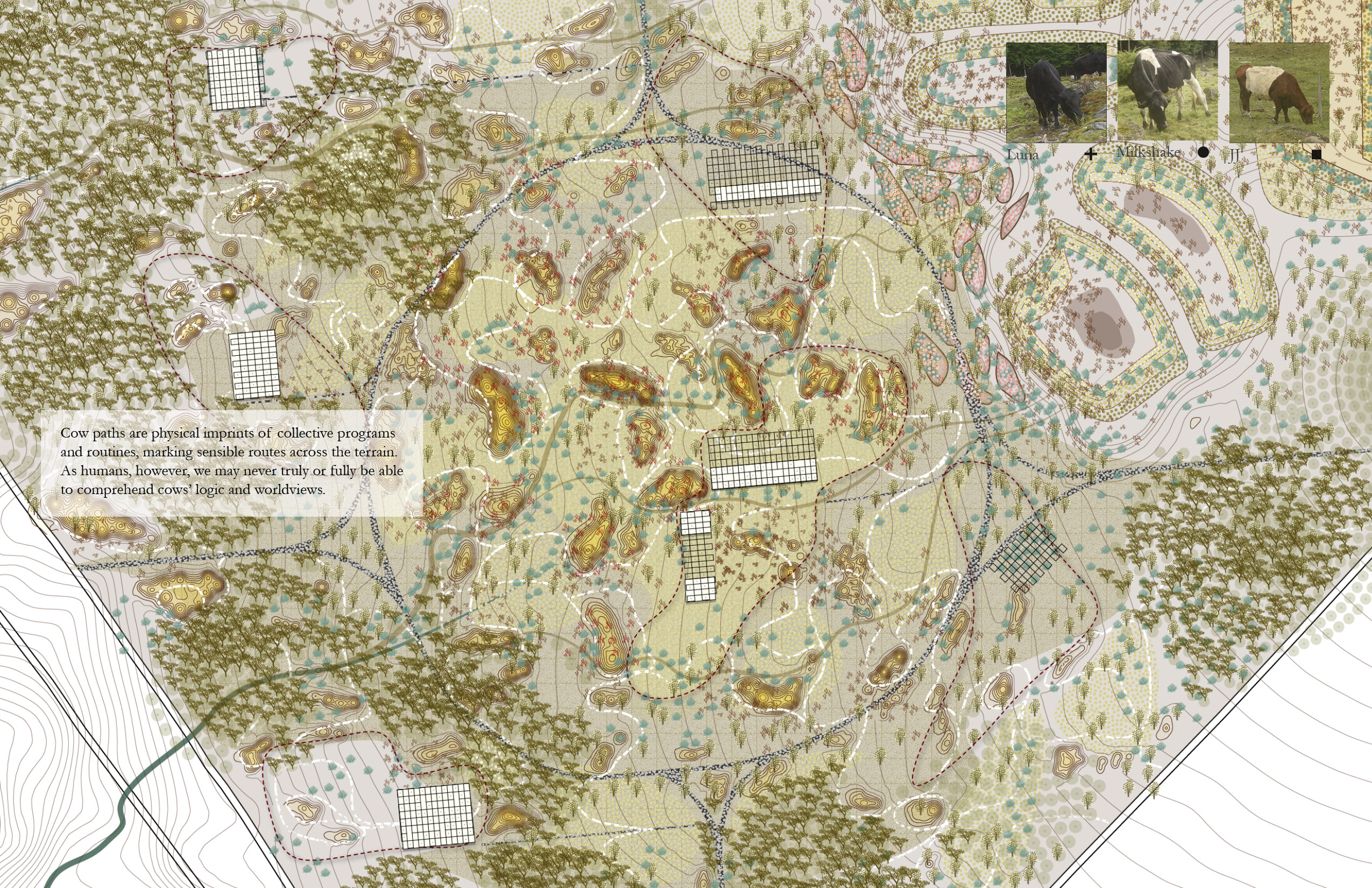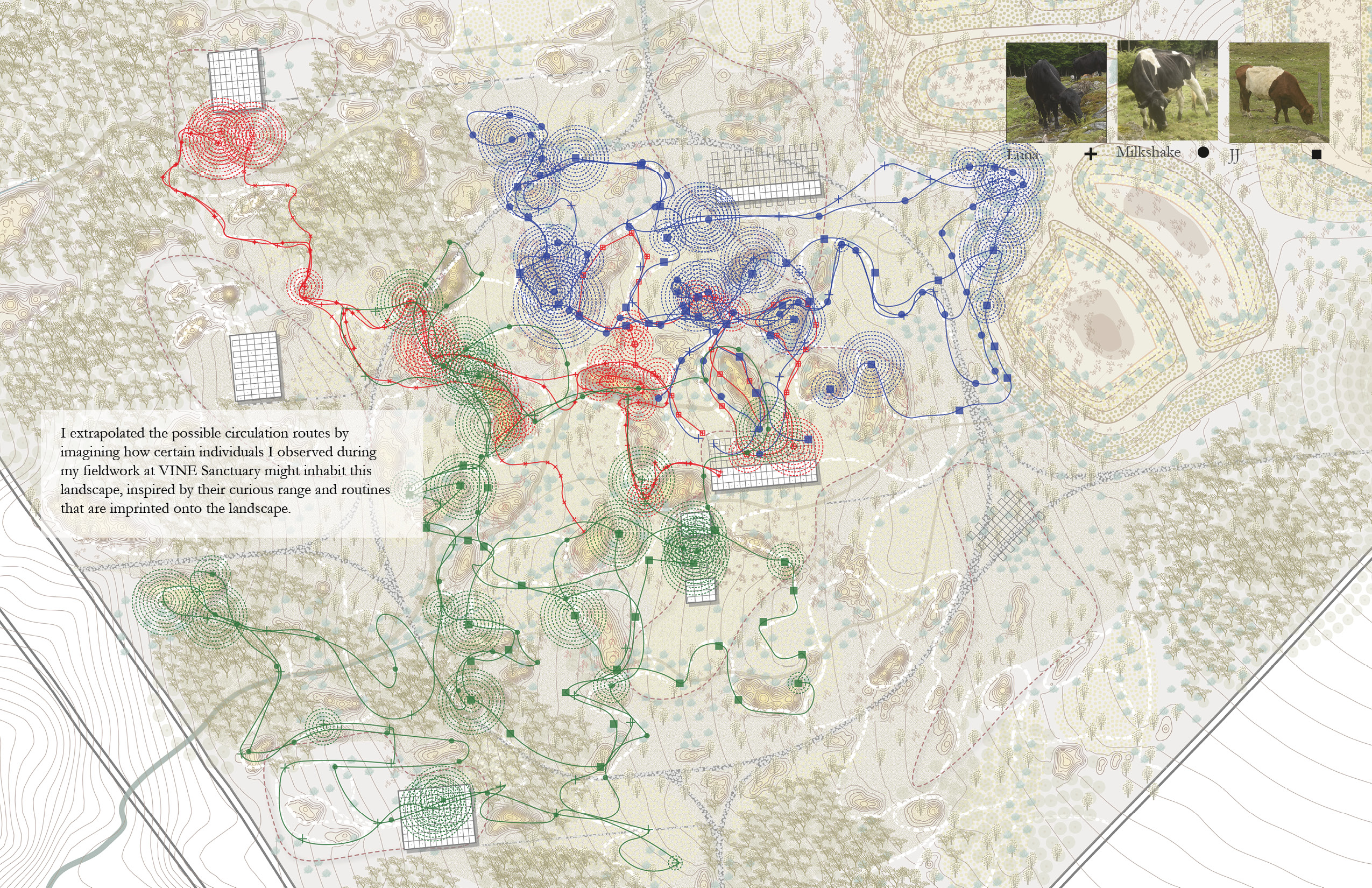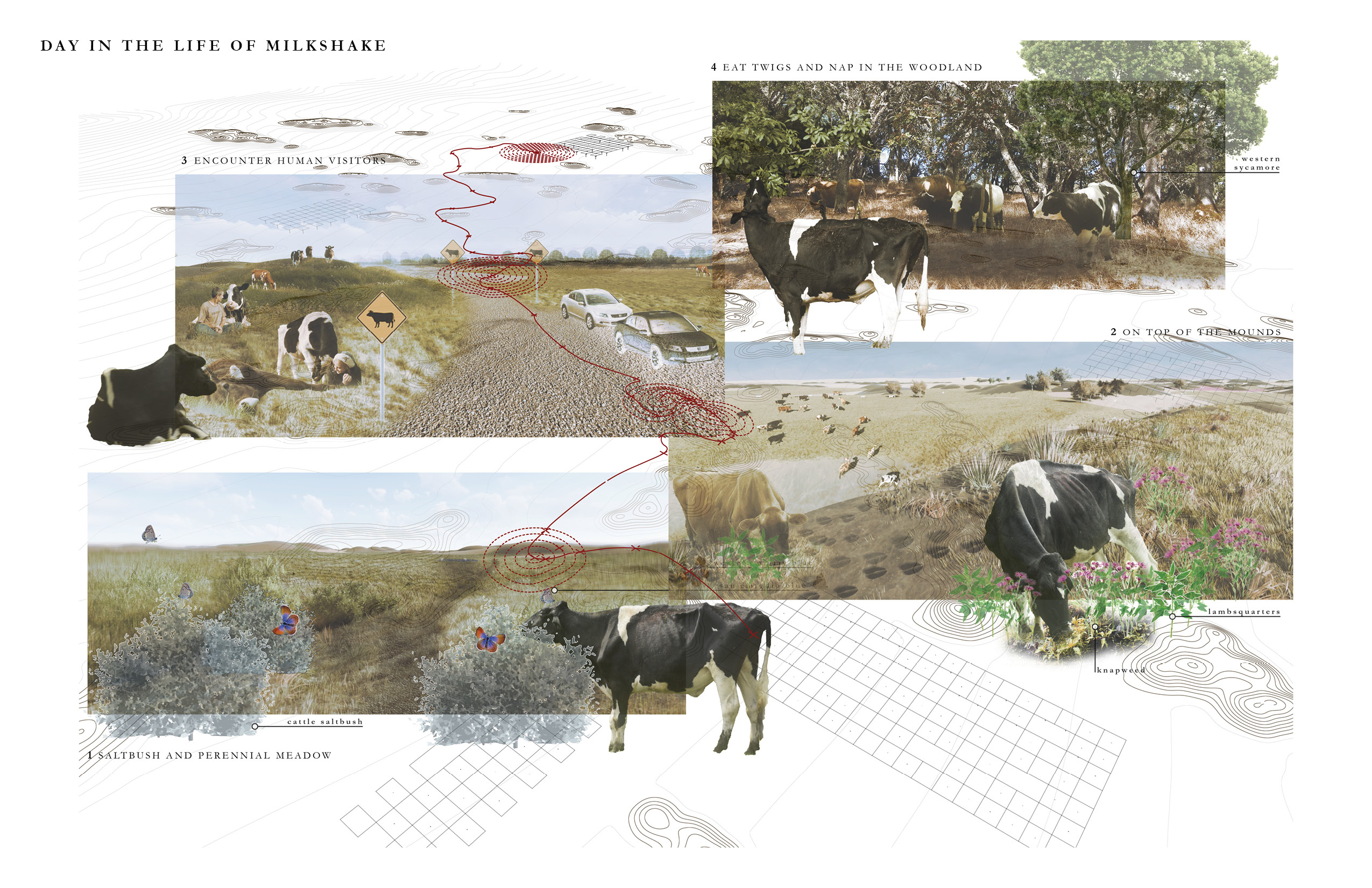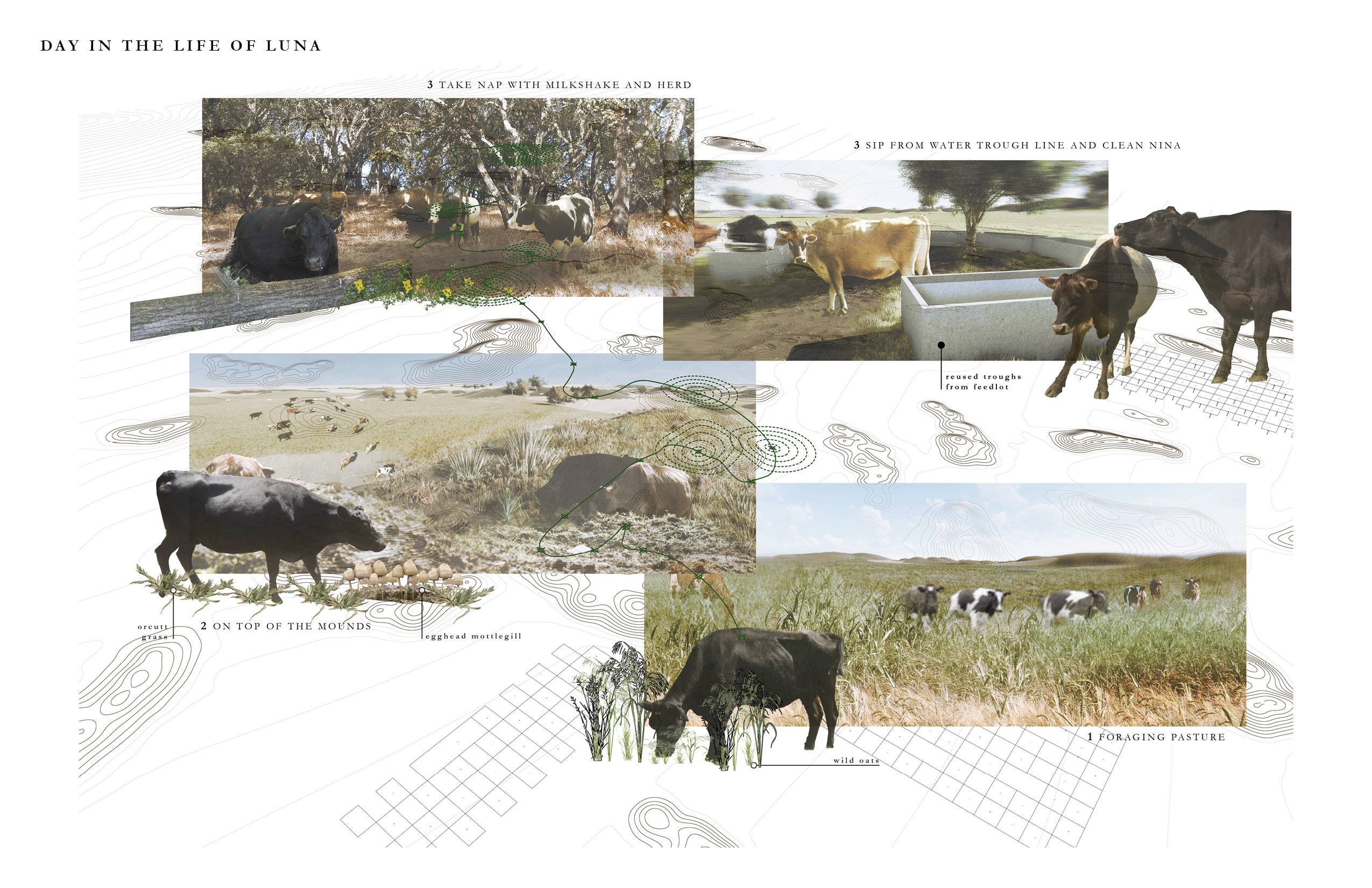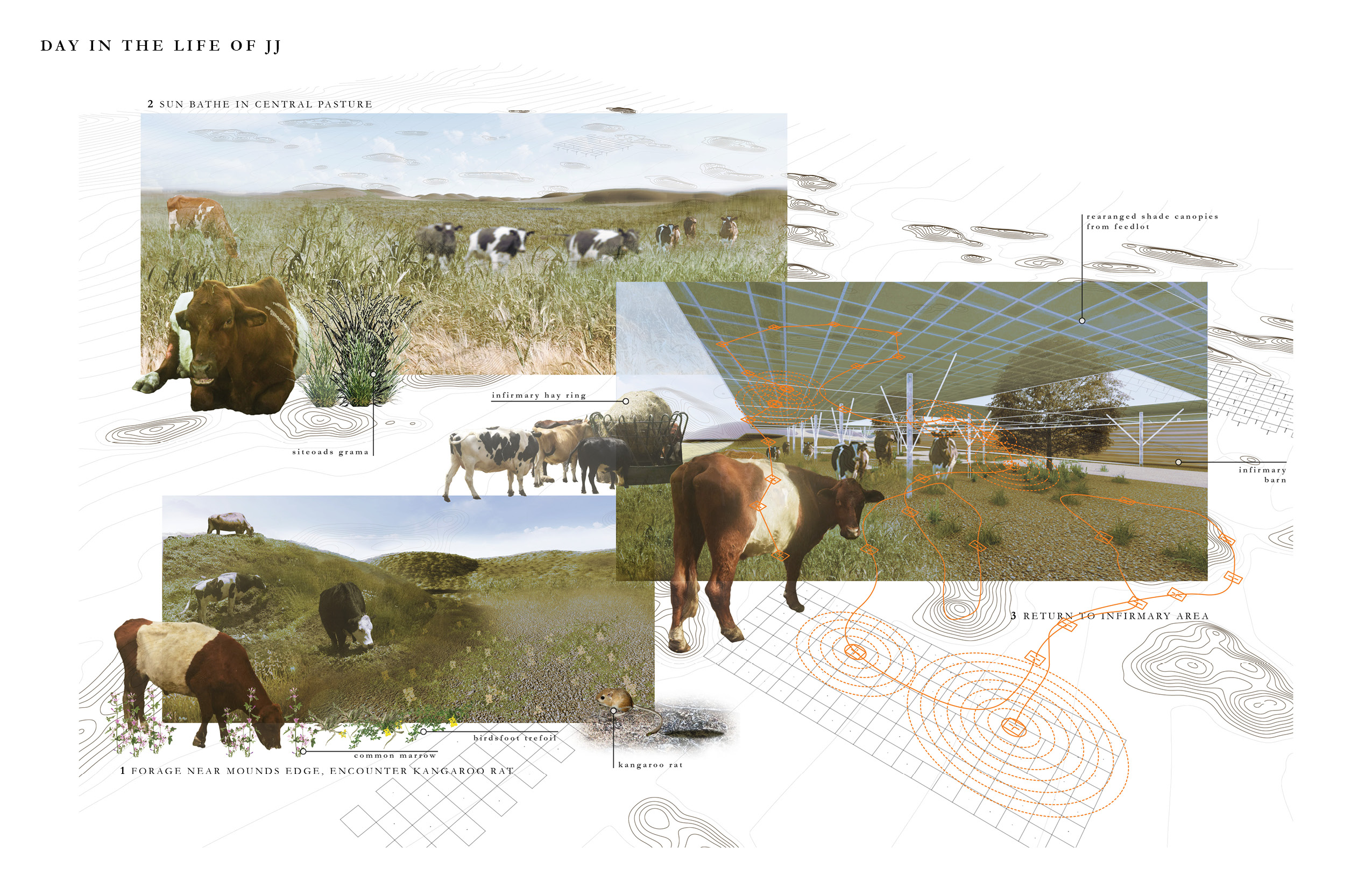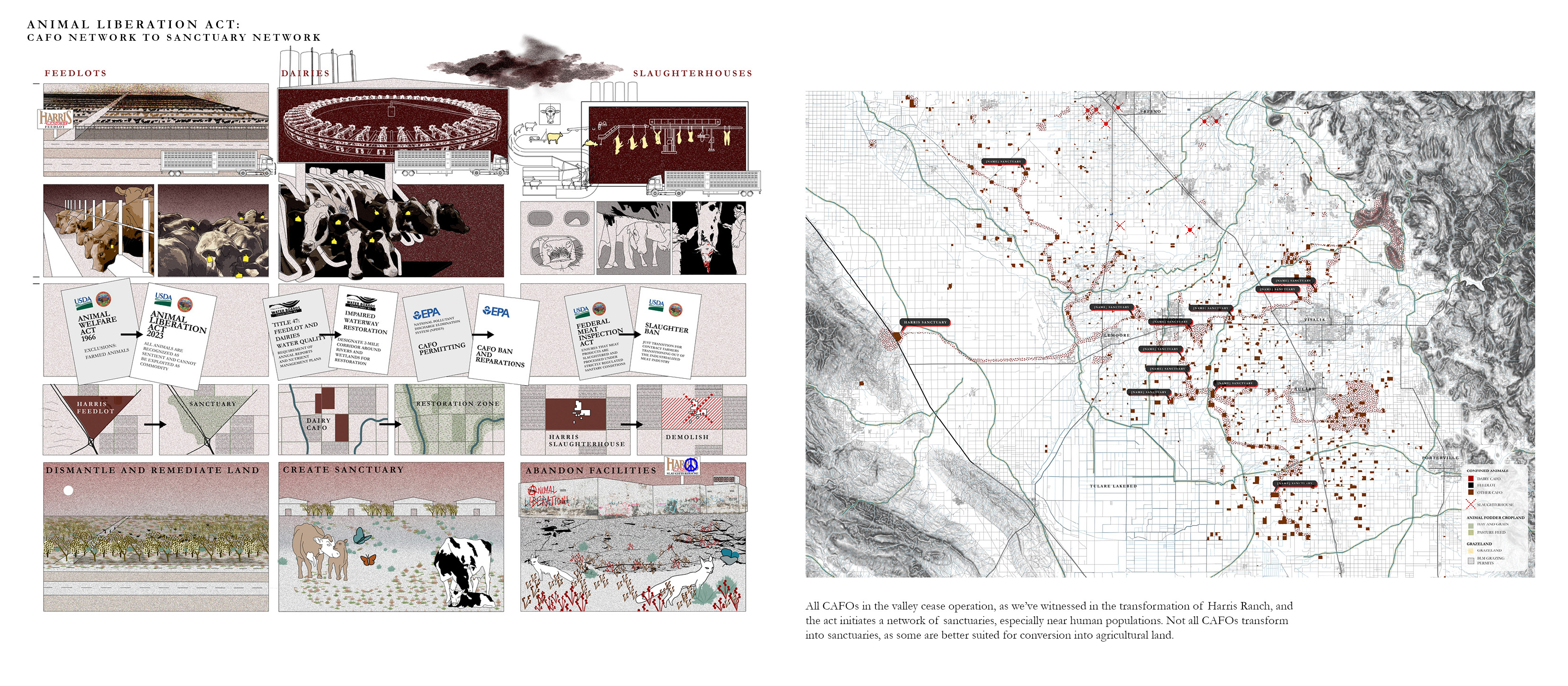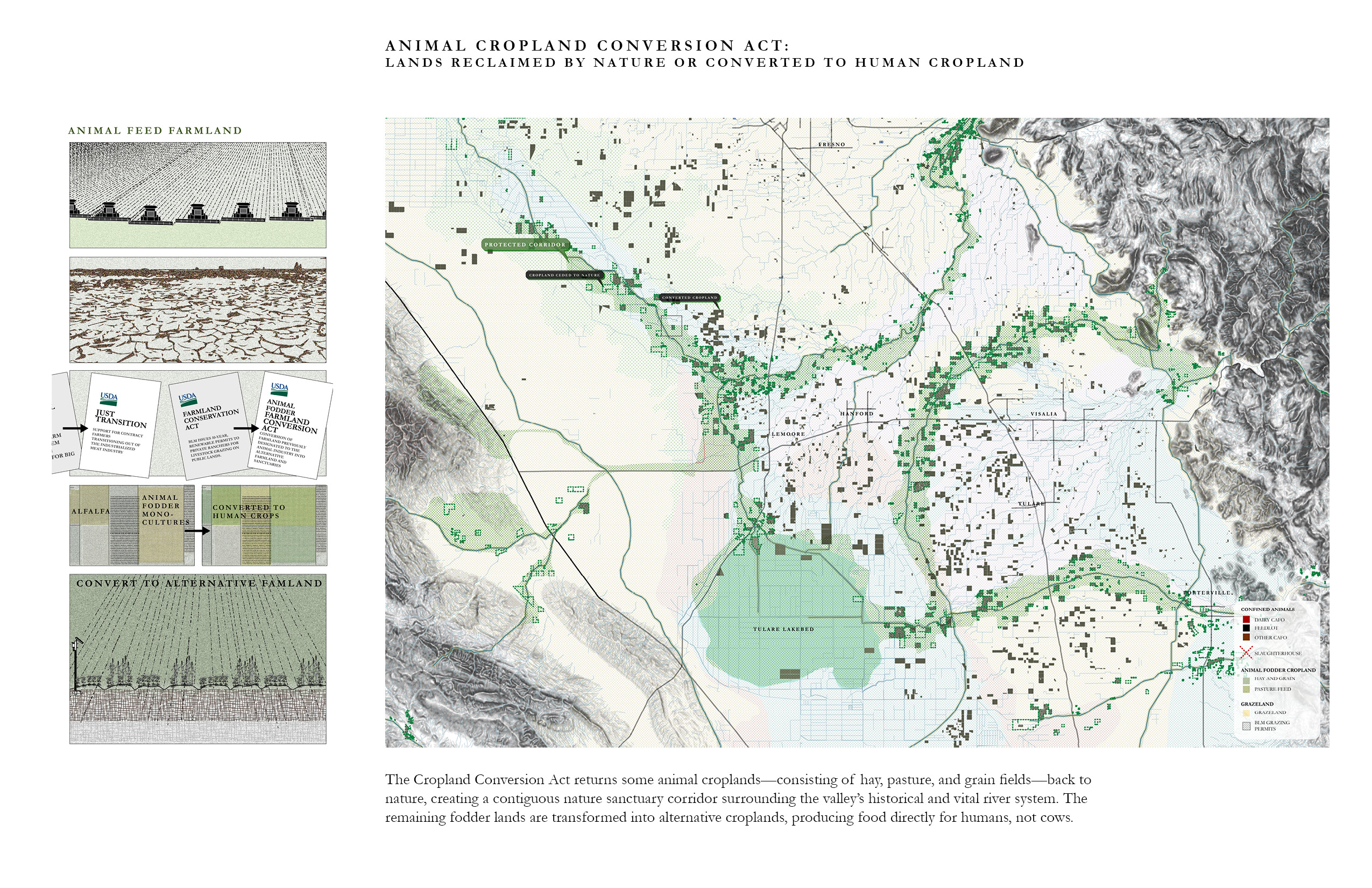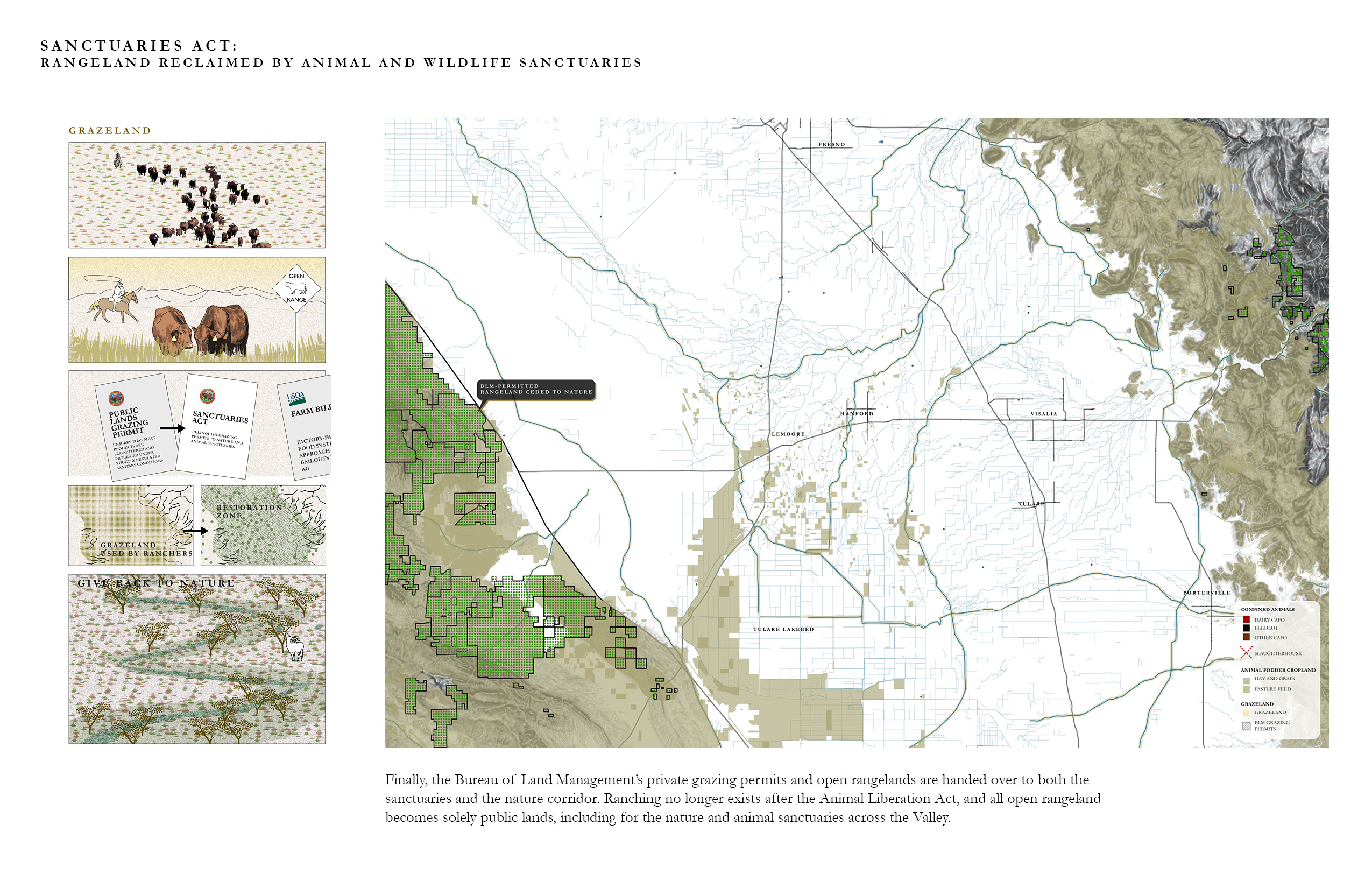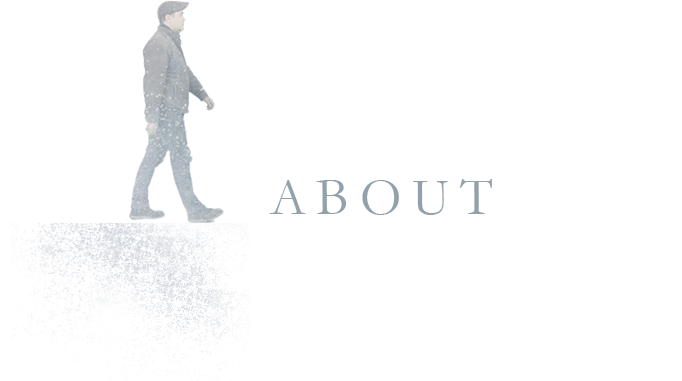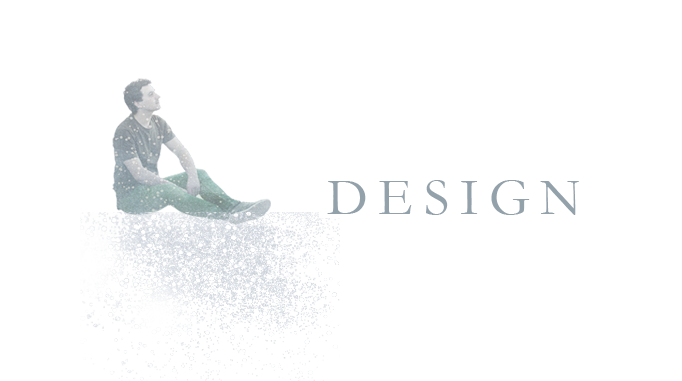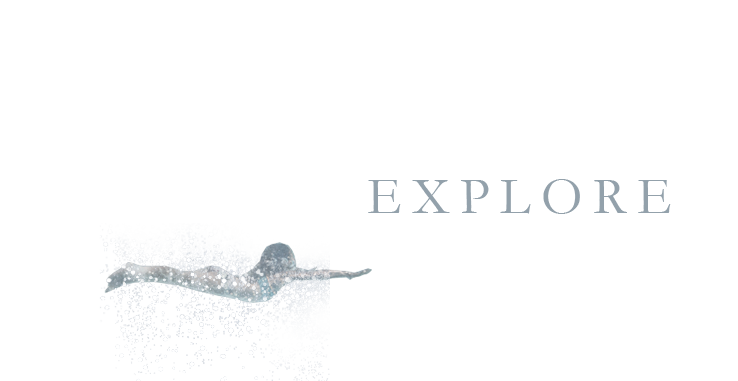
Master in Landscape Architecture Design Thesis
Fall 2022 - Spring 2023
Harvard Graduate School of Design
Site: Harris Ranch Feedlot, San Joaquin Valley, California
Advised by: Francesca Benedetto
Featured in: Harvard Animal Law News, 2023 Bovine Scholarship Network Conference
Sanctuary State transforms an 800-acre "cattle" feedlot into a cow sanctuary, a site for interspecies confrontation, healing, and codesign.
Feedlots and other Concentrated Animal Feeding Operations (CAFOs) are common in California’s San Joaquin Valley.
Feedlots, where "cattle" are fattened in the final stage of production before slaughter, are highly degraded landscapes that epitomize fraught human-animal relationships that invisiblize, instrumentalize and condemn domesticated animals in the industrialized food system.
The feedlot-to-sanctuary transformation envisions a future where design confronts and dismantles the systems represented by such sites.
The transformation strives toward ecological reparations and animal liberation simultaneously. Humans first dismantle the feedlot to initiate restoration, confronting the injustices of mass animal production. Infirmaries replace slaughter loading docks, woodlands memorialize cow passings, perennial plantings remediate the damaged soil, and waste accumulates into feral habitat islands that entice cows to meander and forage. Cows and other beings participate as co-designers, revealing the feral sociality of the site’s post-industrial reality. Feral ecologies and self-determining animals, at the sanctuary and the Valley beyond, are taken seriously as agents of resistance and growth in the most degraded of places and situations.
Existing Conditions of Harris Ranch
Harris Ranch is the largest CAFO on the west coast of the United States. The feedlot is 800 acres and consists of a barren dirt floor holding between 70-100,000 cows at a time. Cows live at industrial feedlots until they reach their desired weights before slaughter. Unfortunately, this feedlot is rather mundane in the San Joaquin Valley, where the Harris Ranch feedlot is just one element of an expansive geophysical cowscape powered by fossil fuels, emitting greenhouse gases, and hosting millions of confined animals. Throughout history, the forced introduction of cows to a landscape it is not native to has transformed much of the San Joaquin Valley from native grasslands to highly industrialized CAFOs and fodder monocultures to serve these operations. The Harris Ranch feedlot itself was designed for maximum efficiency, density, and productivity and includes about 600 acres of holding pens and loading docks and 200 acres of large manure pits that store liquid manure and feedlot runoff. Unlike most CAFOs which tend to be hidden away from public sight, the Harris Ranch site is adjacent to Interstate-5 for about 1.5 miles, causing travelers of the interstate to often remark upon its repulsive stench and visual presence. Simultaneously, the site's proximity to a well-frequented interstate presents an opportunity for public visibility as the feedlot is dismantled and transformed.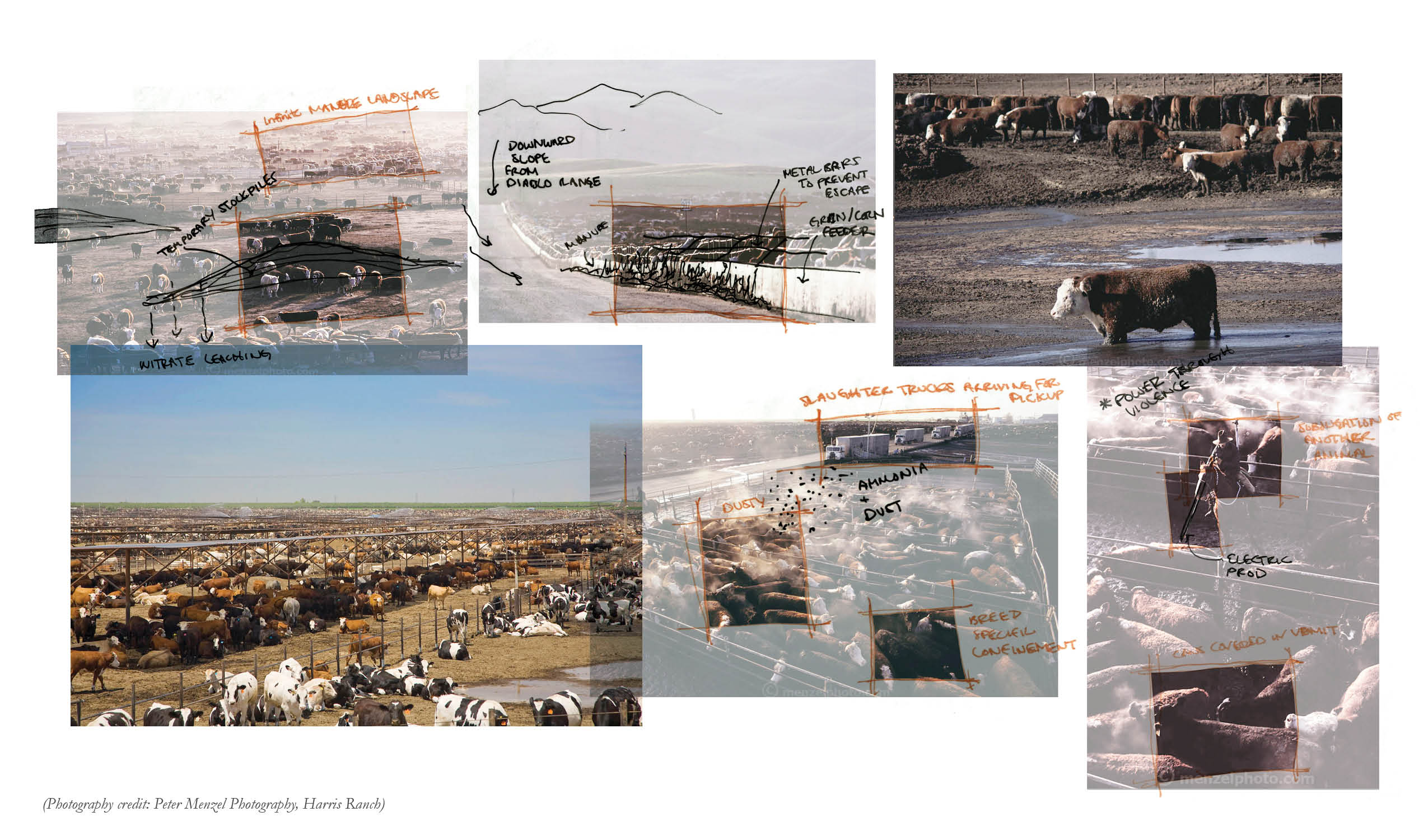
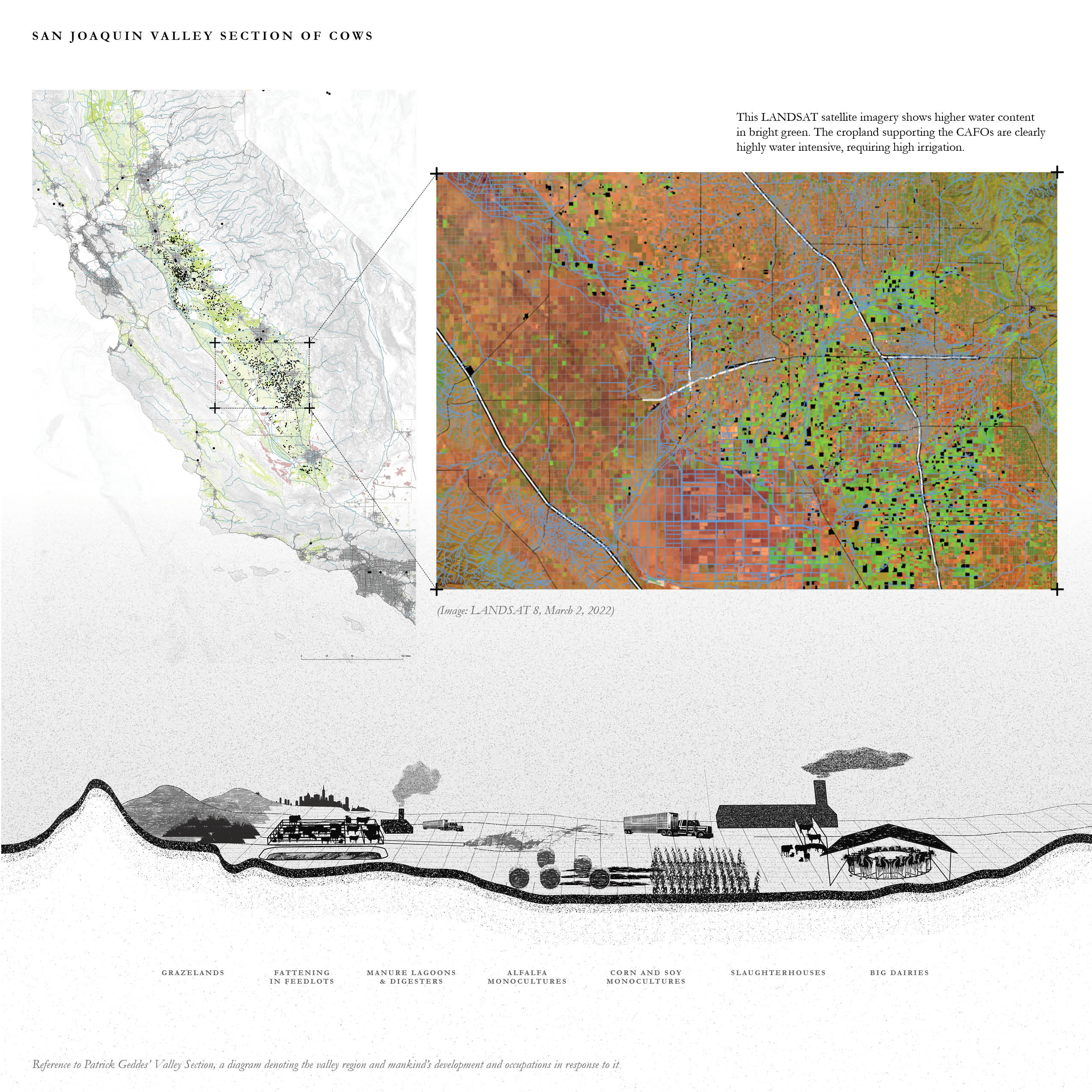
CONFRONT, DISMANTLE + REPAIR, and HEAL + CODESIGN
To set the stage for this thesis, social and climatic collisions force us to reckon with the animal-industrial complex. Such collisions and events include anarchy, divestment from animal agriculture, self-freeing cows, social justice movements, and climate reckoning. In my thesis, CAFO operations end in the near future from these pressures. The landscape design intervention is set within this post-meat future, premising on the idea that “When the particular biases that inflect human–animal relations are taken seriously, we gain another window into how landscapes function as broader world-making projects.” (Klosterkill, The Shifting Position of Animals in Landscape Theory, Landscape Journal: design, planning, and management of the land)The Harris Ranch feedlot site reinvention commences with a massive dismantling and ecological restoration, underpinned by goals of flourishing, codesign, and kinship. The design proposal intervenes in four broad material ways. Each of the four material processes is framed through actions over time: confront the standard industry landscape practice → dismantle and repair → and heal and codesign.
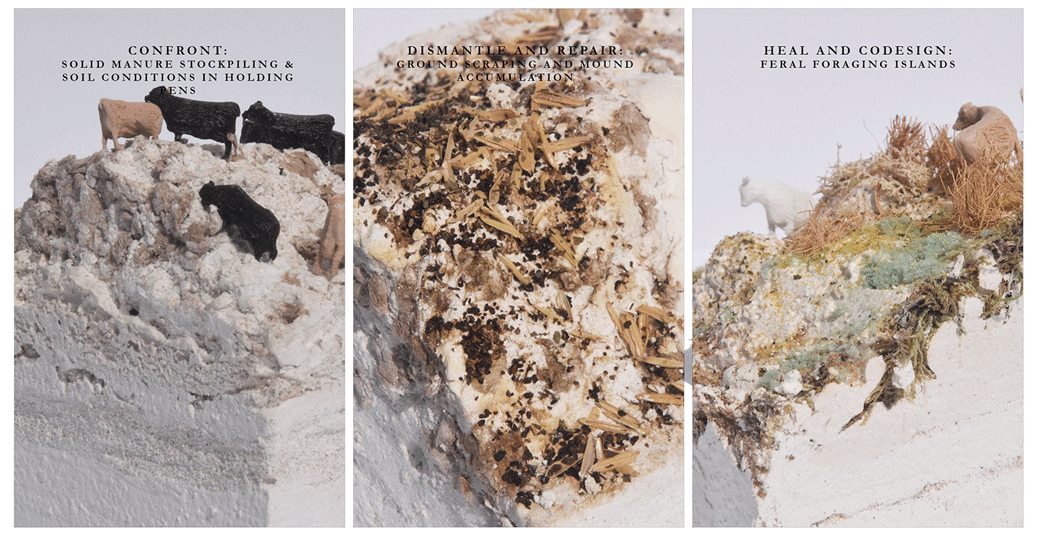
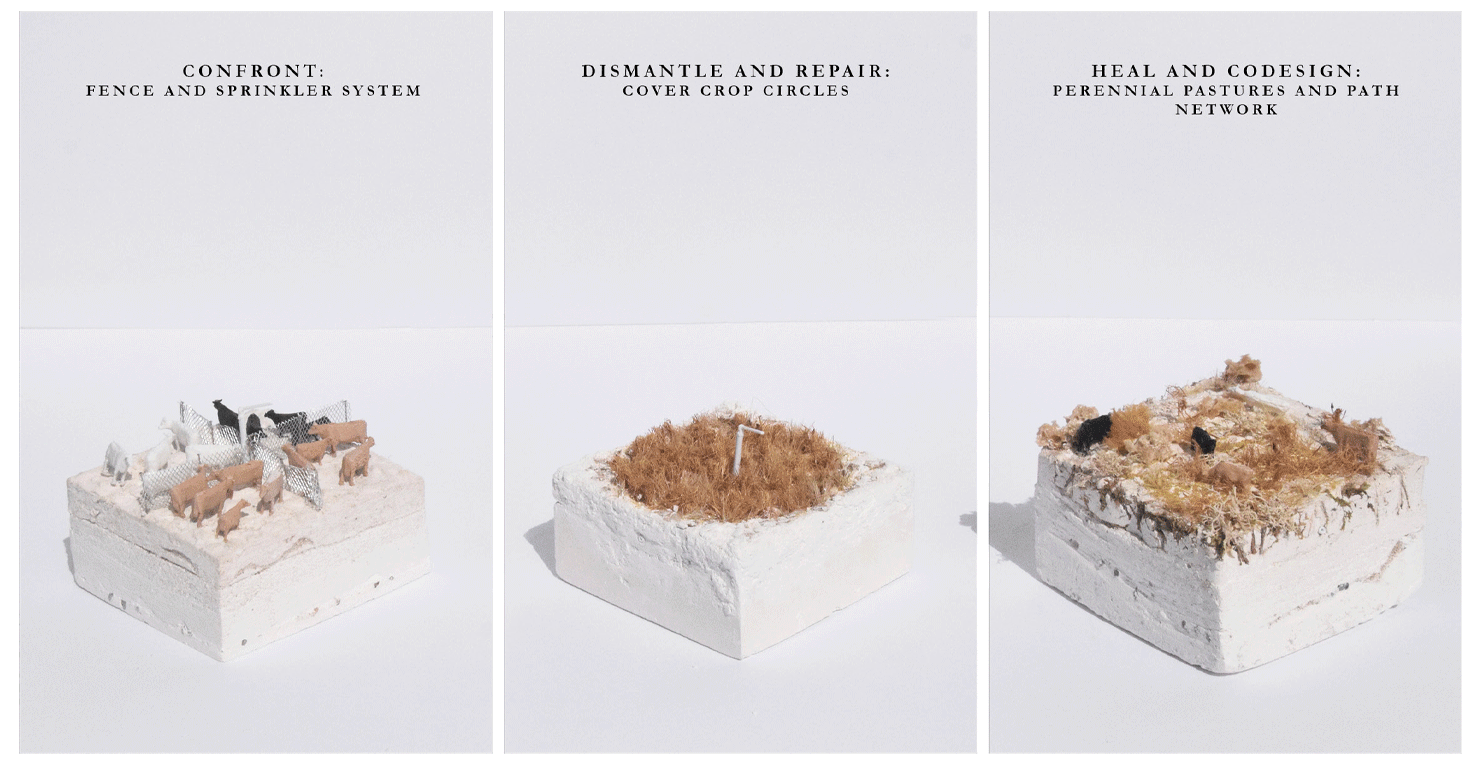
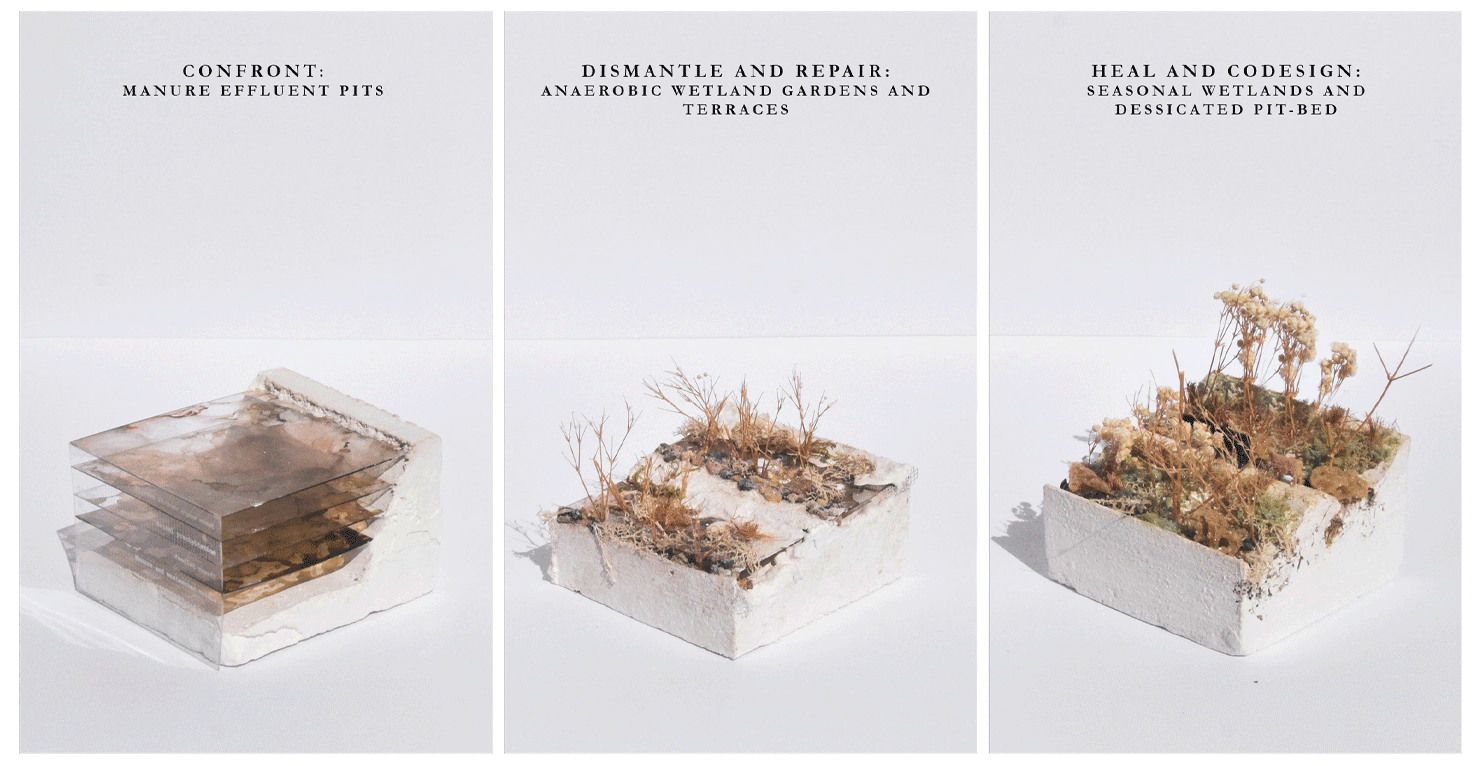
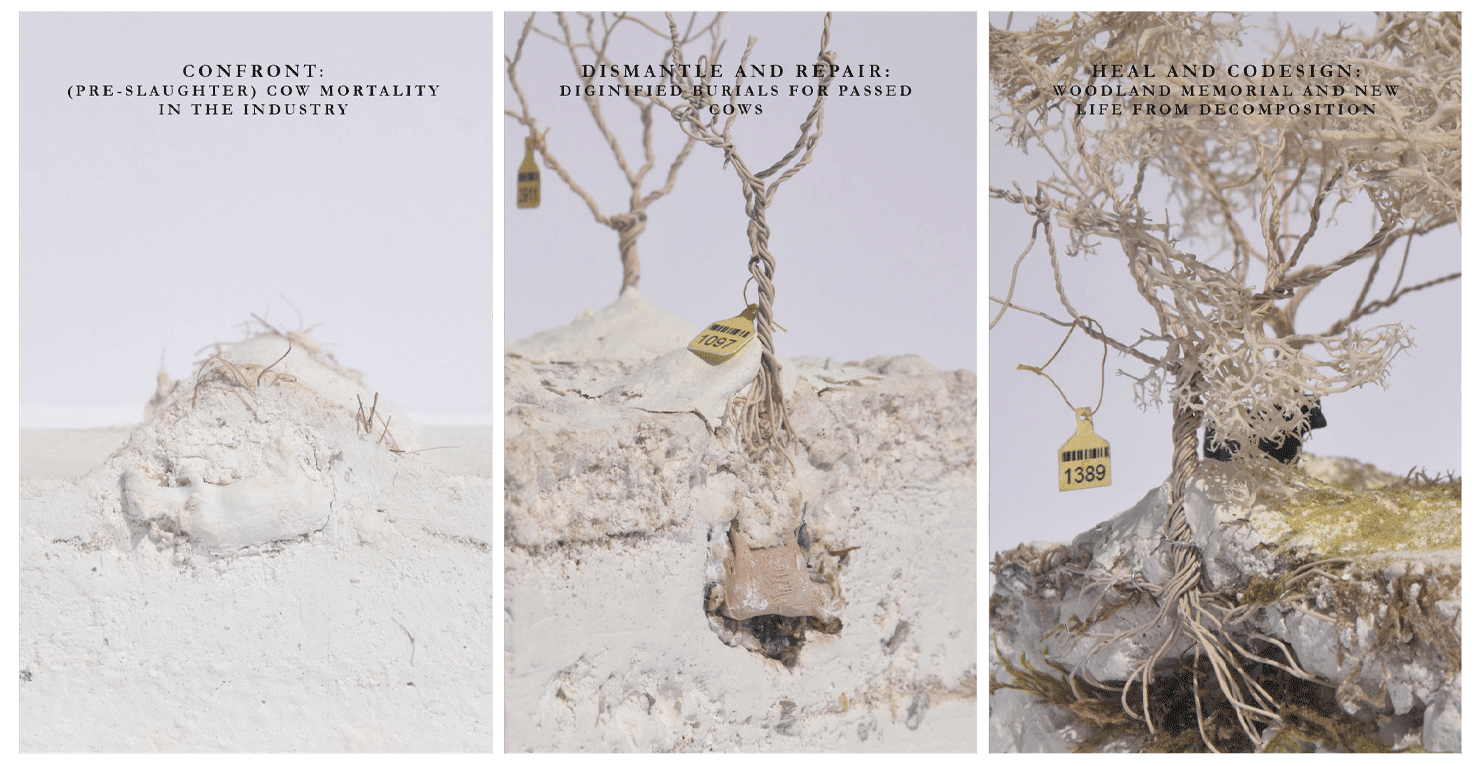
TRANSFORMATION
The dismantling process of the site is phased over about five years. The pen fences are torn down one area at a time, and cow infirmaries replace the previous loading docks. During this time, cows rotationally graze in the foothills of the Diablo Range, crossing a corridor over the interstate. The woodland cemetery is initiated as a couple thousand of the feedlot cows pass. Cover crops, pasture grass, woodland plantings, and wetland plantings begin to repair the site ecologically. Cows heal by foraging rotationally amongst new plant palettes, a relief from their feedlot diet of grain and corn.In 5-15 years, planting communities evolve, the pits dry up, and the human-initiated choreography of the site begins to take on a more unruly character. Cows begin to explore wider terrain; their paths across the landscape become more legible. Perennial pastures replace annual cover crops, and the woodland expands with each cow passing, creating a buffer between sanctuary and the interstate. As the woodland grows over time, the formal geometries of the plantings merge, creating masses of tree canopy. The mounds grow into organic landforms that are quickly colonized by feral plant growth, becoming new foraging grounds. The mounds’ physical and chemical forms also evolve by plants, erosion, water, gravity, and cow hooves.
By 15-20 years, most of the original feedlot cows have passed, reaching their natural lifespans. The landscape now finally has a semblance of balance between cows and acreage, and the site is revegetated as much as possible within the 800 acres. But the cow community is not gone entirely. The remaining residents are rescued off-site cows or descendants of passed feedlot cows.
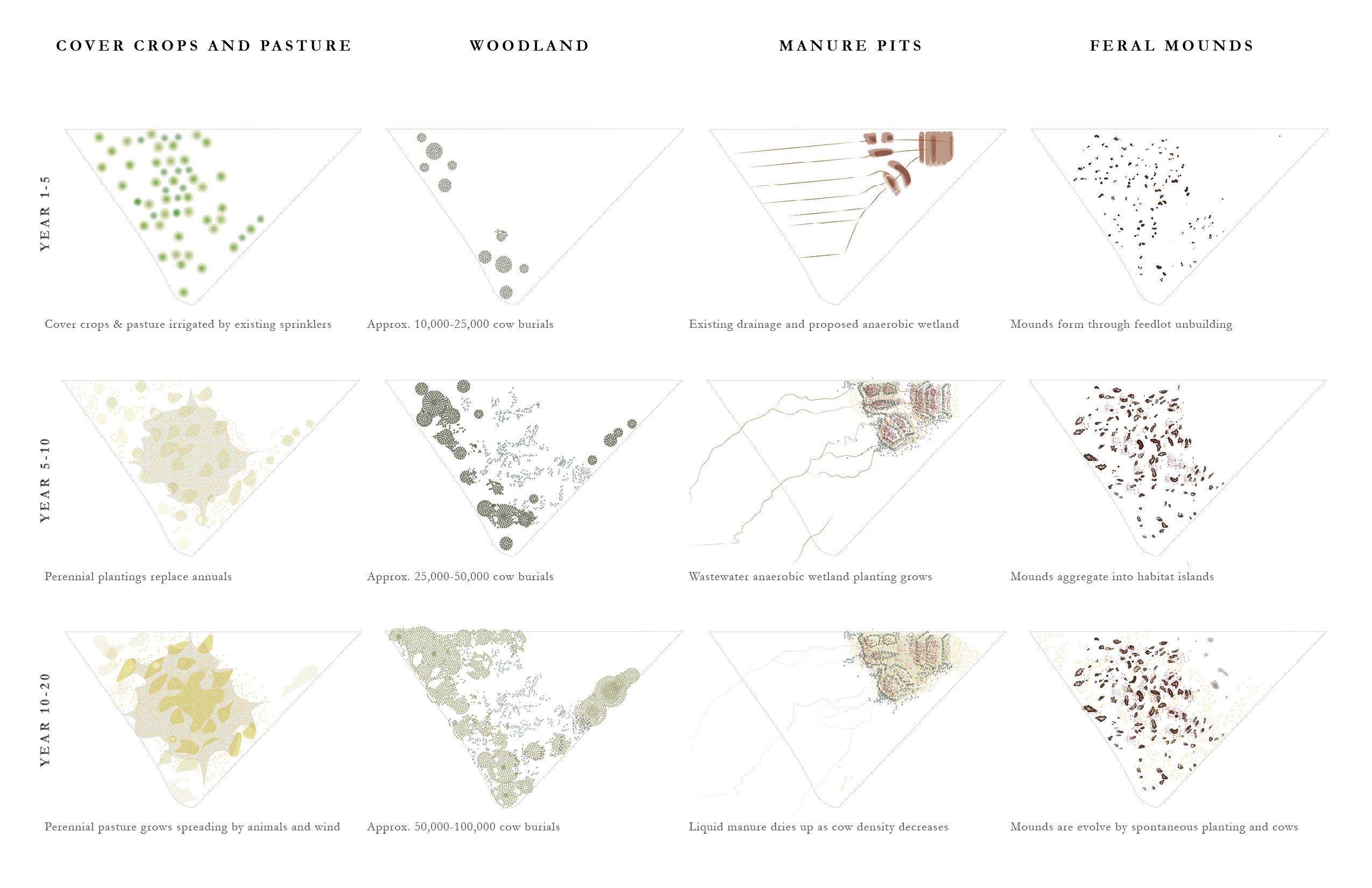
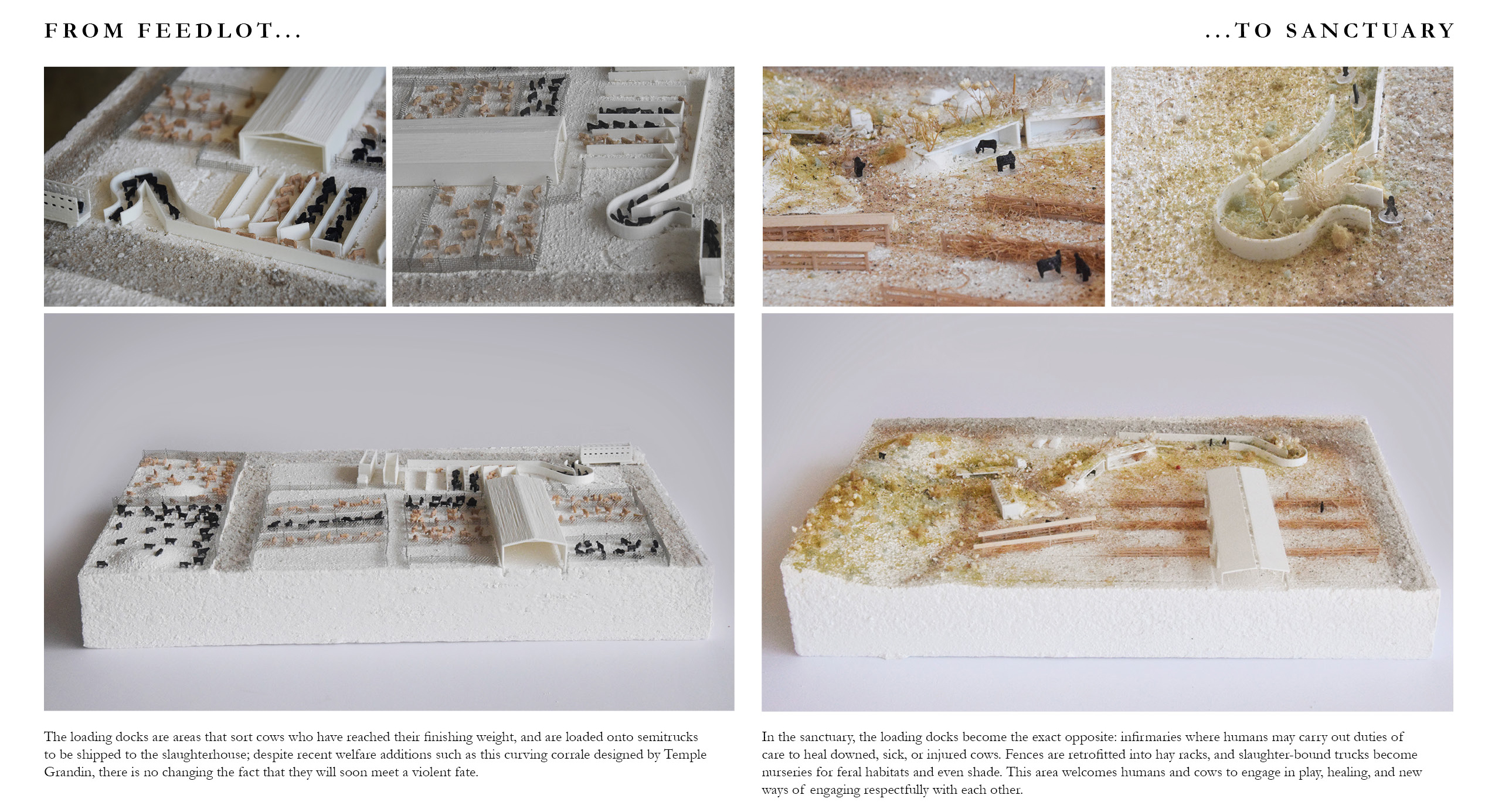
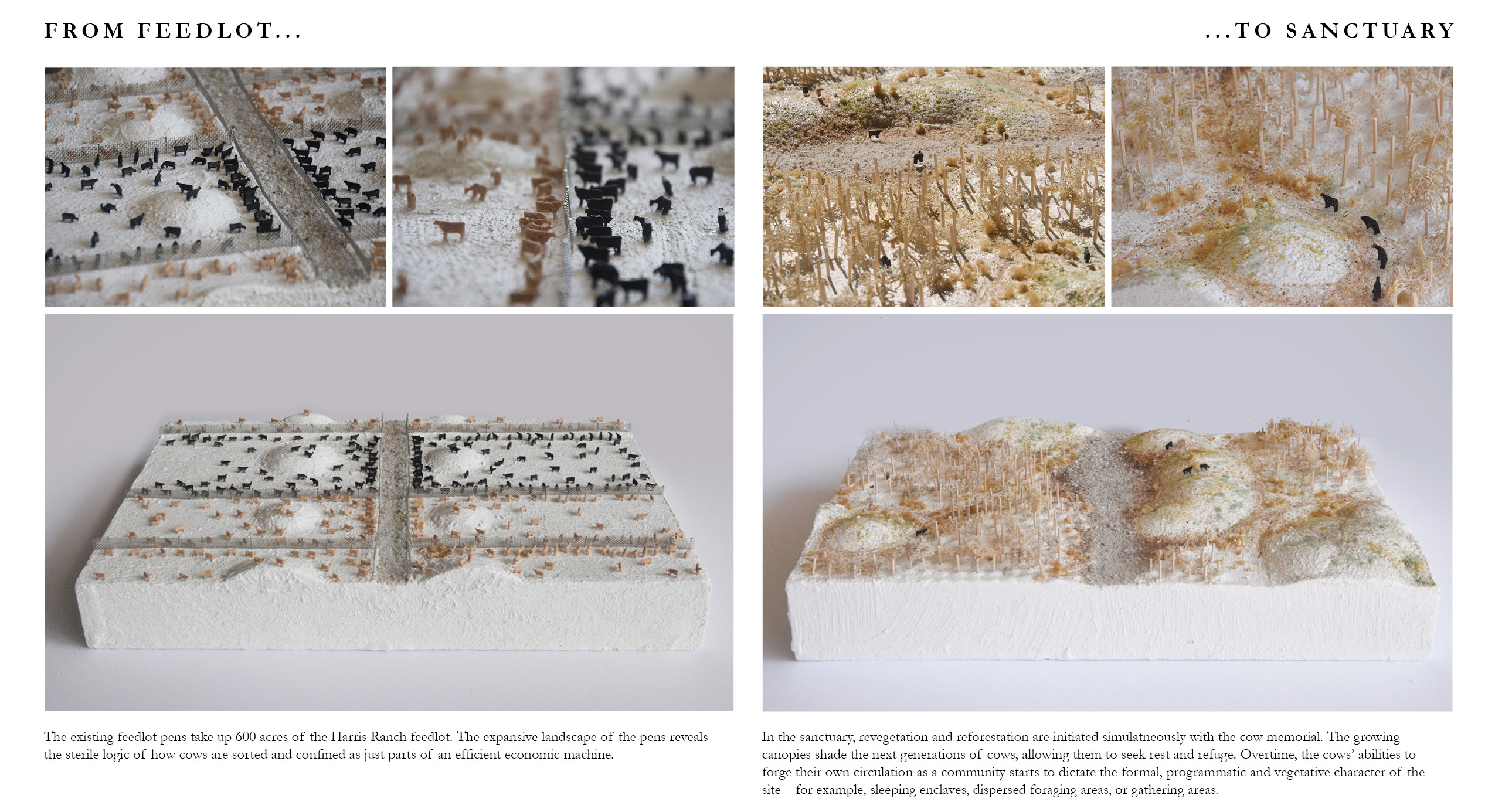
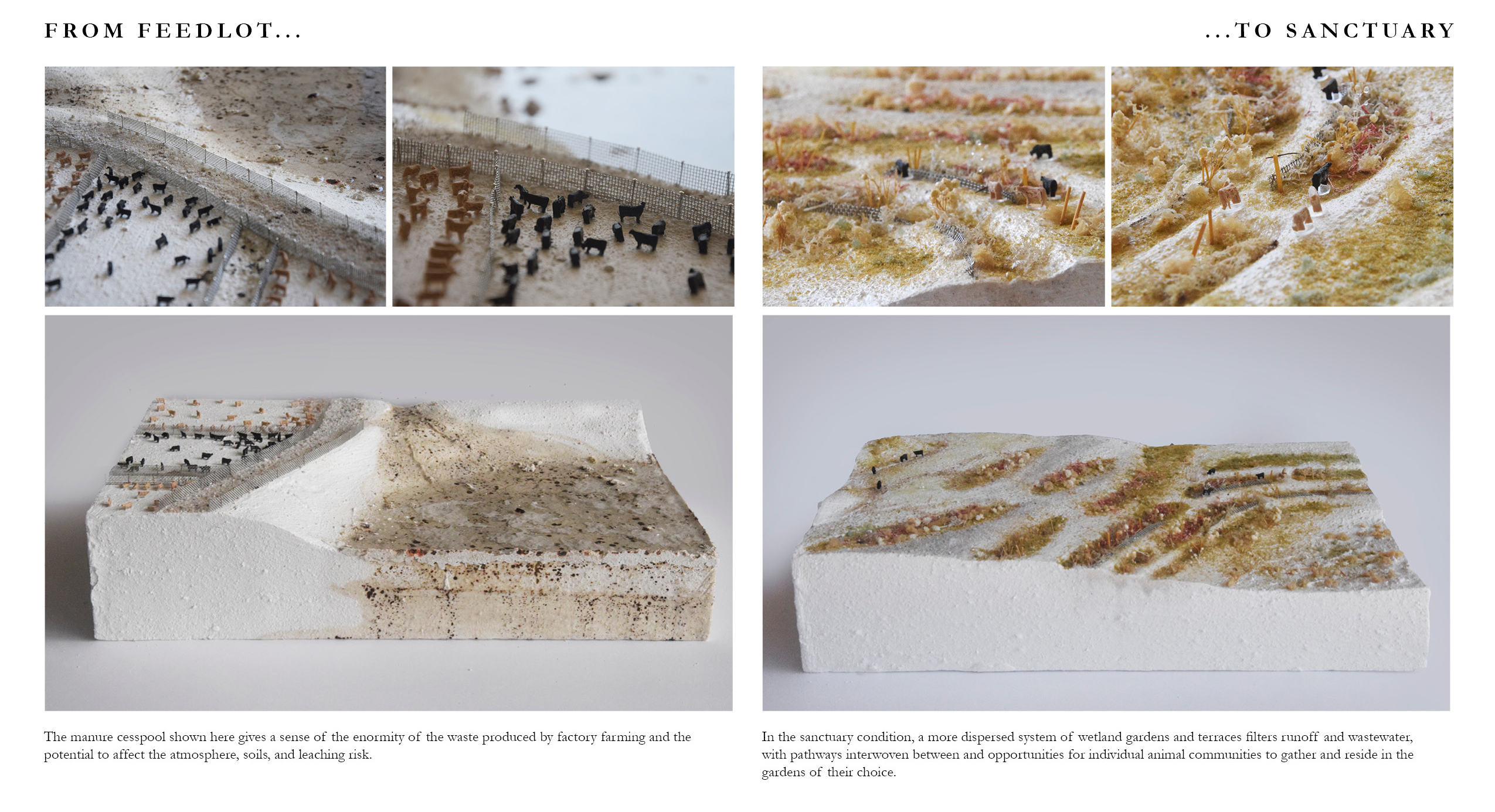
ENCOUNTERS IN SANCTUARY
I extrapolated the cows’ circulation by imagining how certain individuals I observed during my ethnographic fieldwork at VINE Sanctuary (a forested farmed animal sanctuary in Vermont) might inhabit this landscape, inspired by their curious range and routines that are imprinted onto the landscape.Across the site transect, humans, cows, and other species engage in new relationships. As cows are not a monolith, they engage in relationships with humans at varying degrees. Some may create feral communities of their own, and some may require more human nurturing or care. The sanctuary is also a public landscape. Interstate-5 travelers’ visitations starkly contrast previous passive viewership of the roadside site, from which they used to shun their eyes away and knew to roll up their window from the stench and sorrow.

ACTS TO TRANSFORM THE VALLEY COWSCAPE
How might the San Joaquin Valley look like in a state of sanctuary? The valley’s existing cowscape currently consists of three broad categories: industrial CAFOs, fodder cropland, and rangeland. Alternative acts shall transform the Valley, giving sanctuary rights to animals and nature, for the benefit of the entire land community. The main act is the Animal Liberation Act, targeting places of mass industrial confinement: feedlots, dairy CAFOs, and slaughterhouses. It is a radical re-imagining (or denouncement) of the federal Animal Welfare Act. The Animal Liberation Act declares that animals have rights to be free from confinement and exploitation, which means they now also have rights to sanctuary. All CAFOs in the valley cease operation, as we’ve witnessed in the transformation of Harris Ranch, and the act initiates a network of sanctuaries, especially near human populations. Not all CAFOs transform into sanctuaries, as some are better suited for conversion into agricultural land.The Cropland Conversion Act, extending from the realization of the Rights of Nature, returns some animal croplands—consisting of hay, pasture, and grain fields—back to nature, creating a contiguous nature sanctuary corridor surrounding the valley’s historical and vital river system. The remaining fodder lands are transformed into alternative croplands, producing food directly for humans, not cows.
Finally, the Bureau of Land Management’s private grazing permits and open rangelands are handed over to the animal and nature sanctuaries. Ranching no longer exists after the Animal Liberation Act, and all open rangeland becomes solely public lands that may be dedicated to the public nature and animal sanctuaries across the Valley.
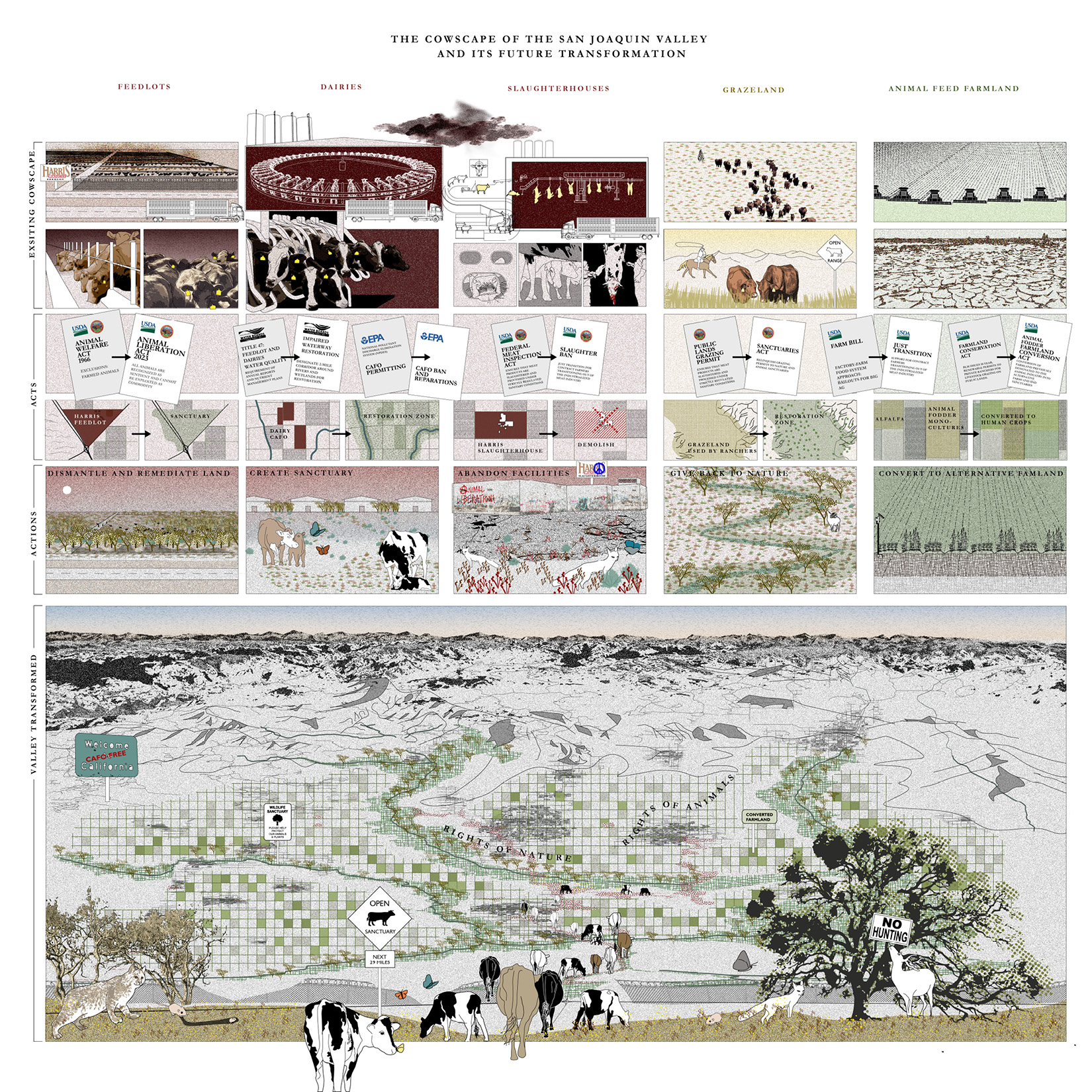
The human-initiated acts begin reparations to animals, but over generations of dismantling, healing, and adaptation, domesticated and wild animals establish feral relationships as they already are in the Anthropocene, blurring the line between the domesticated and wild worlds.
This project ultimately envisions a more just world for animals if we take their flourishing, agency, and kinship seriously. Cows’ agency to inaugurate landscapes through their own perception, made visible through the creation of sanctuary, instills hope for a future of transitional interspecies justice and coexistence.
This project ultimately envisions a more just world for animals if we take their flourishing, agency, and kinship seriously. Cows’ agency to inaugurate landscapes through their own perception, made visible through the creation of sanctuary, instills hope for a future of transitional interspecies justice and coexistence.
